
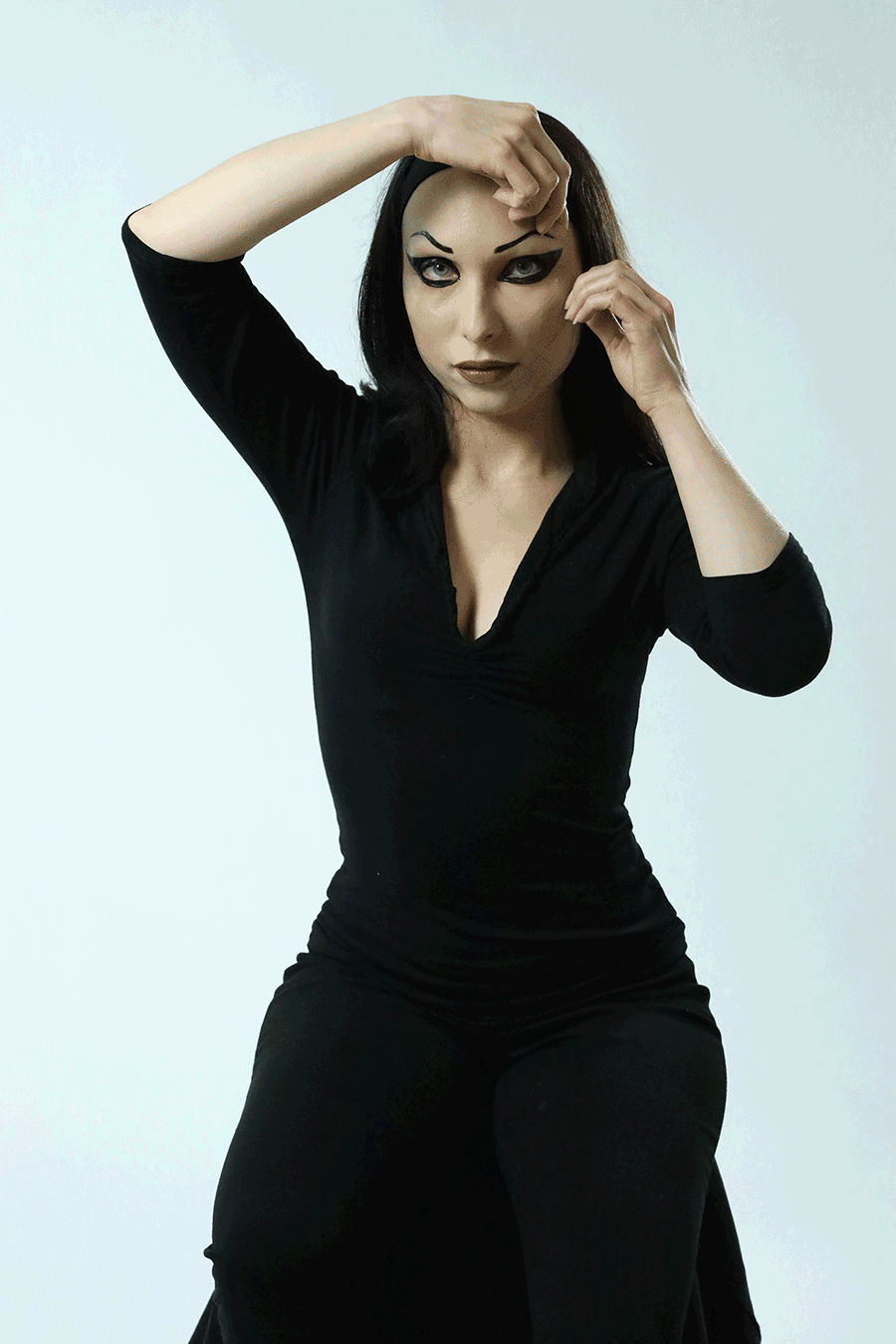
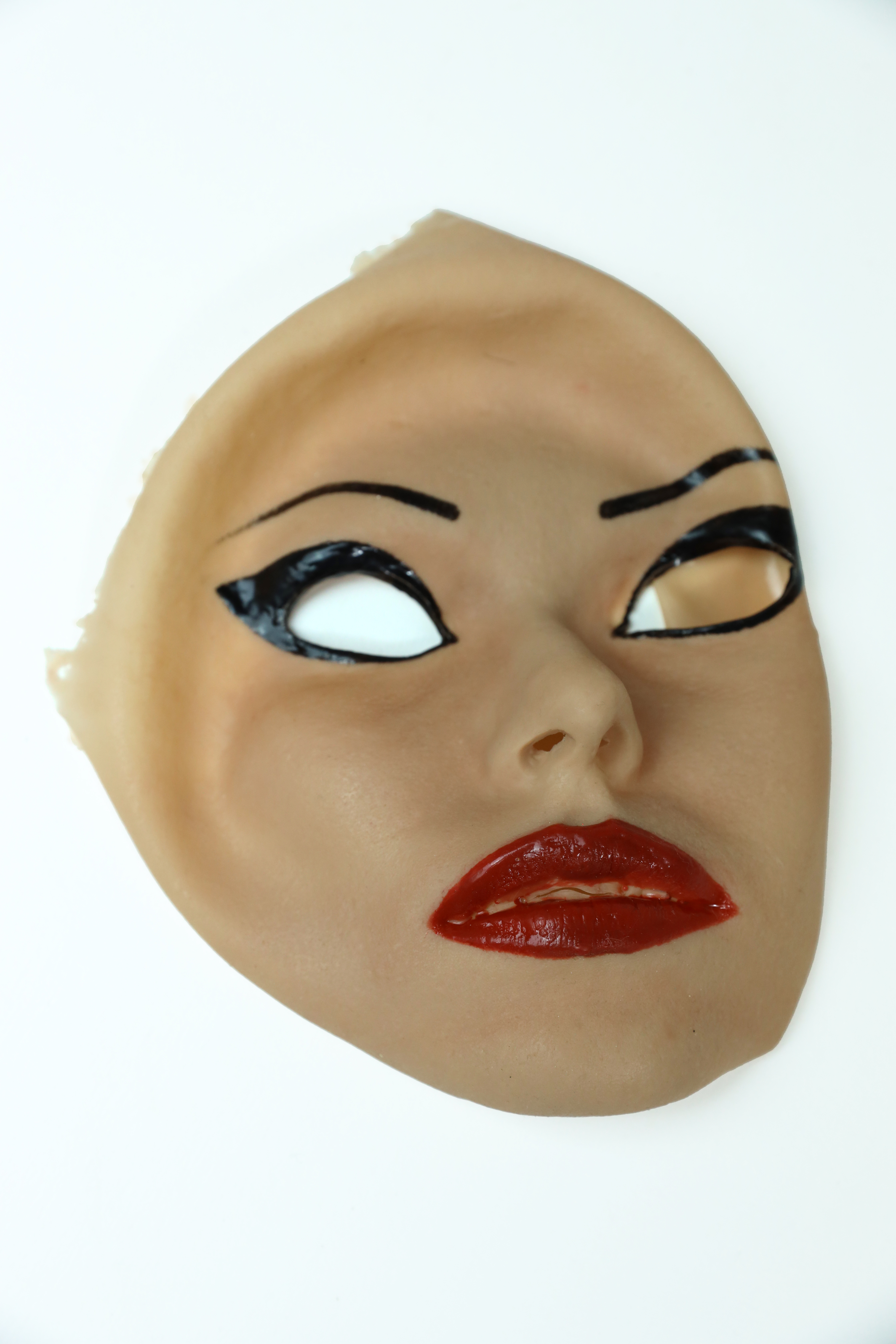
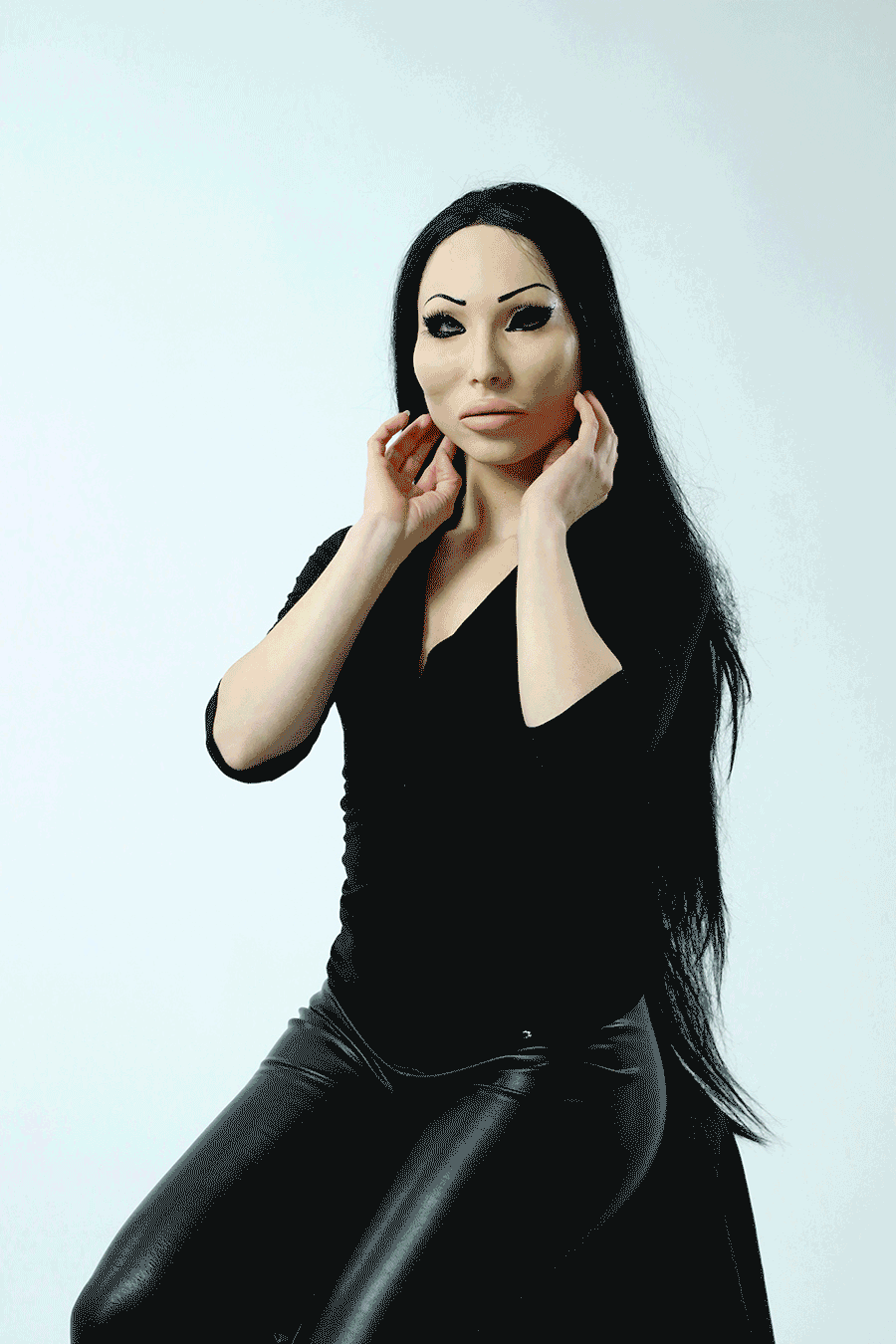
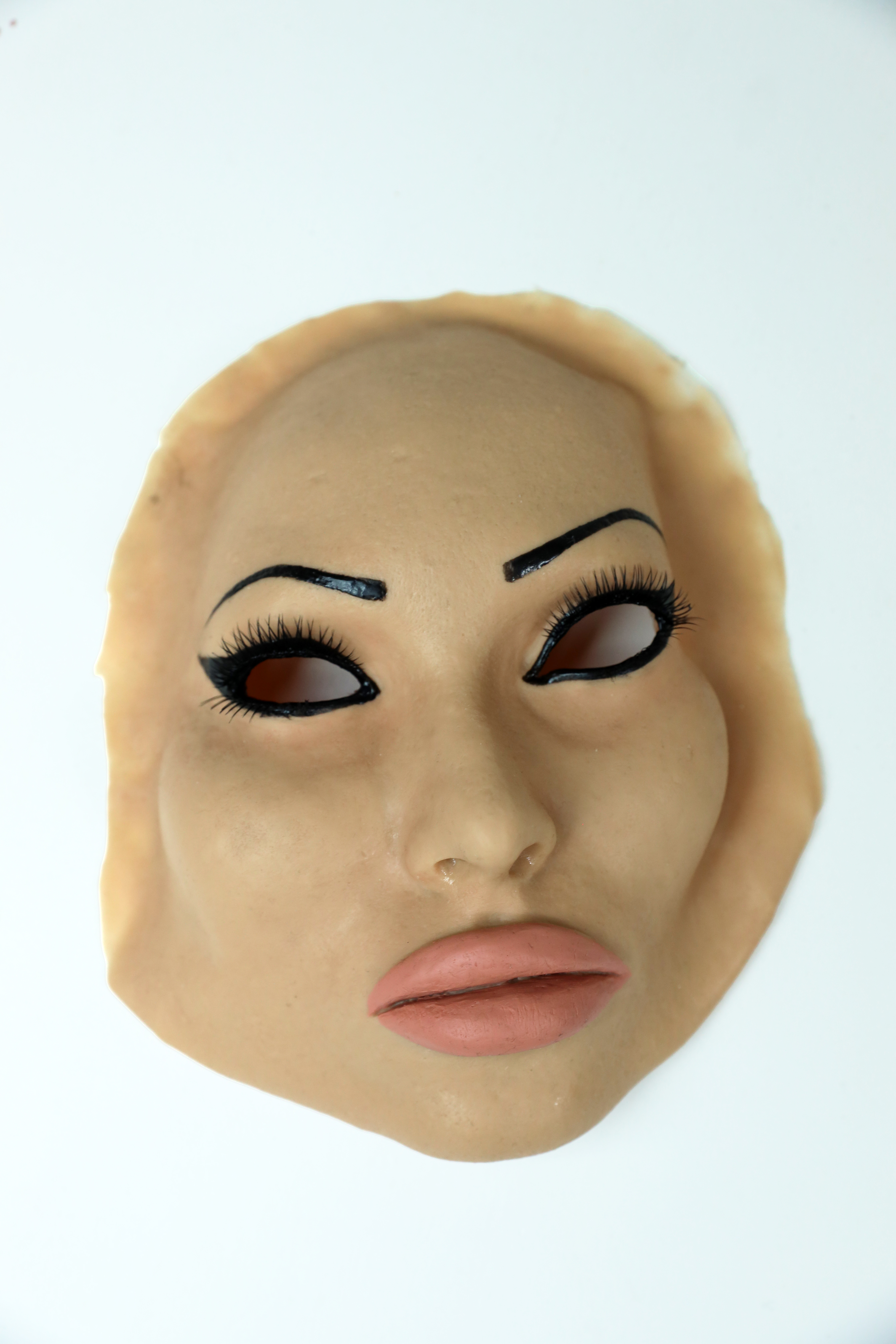
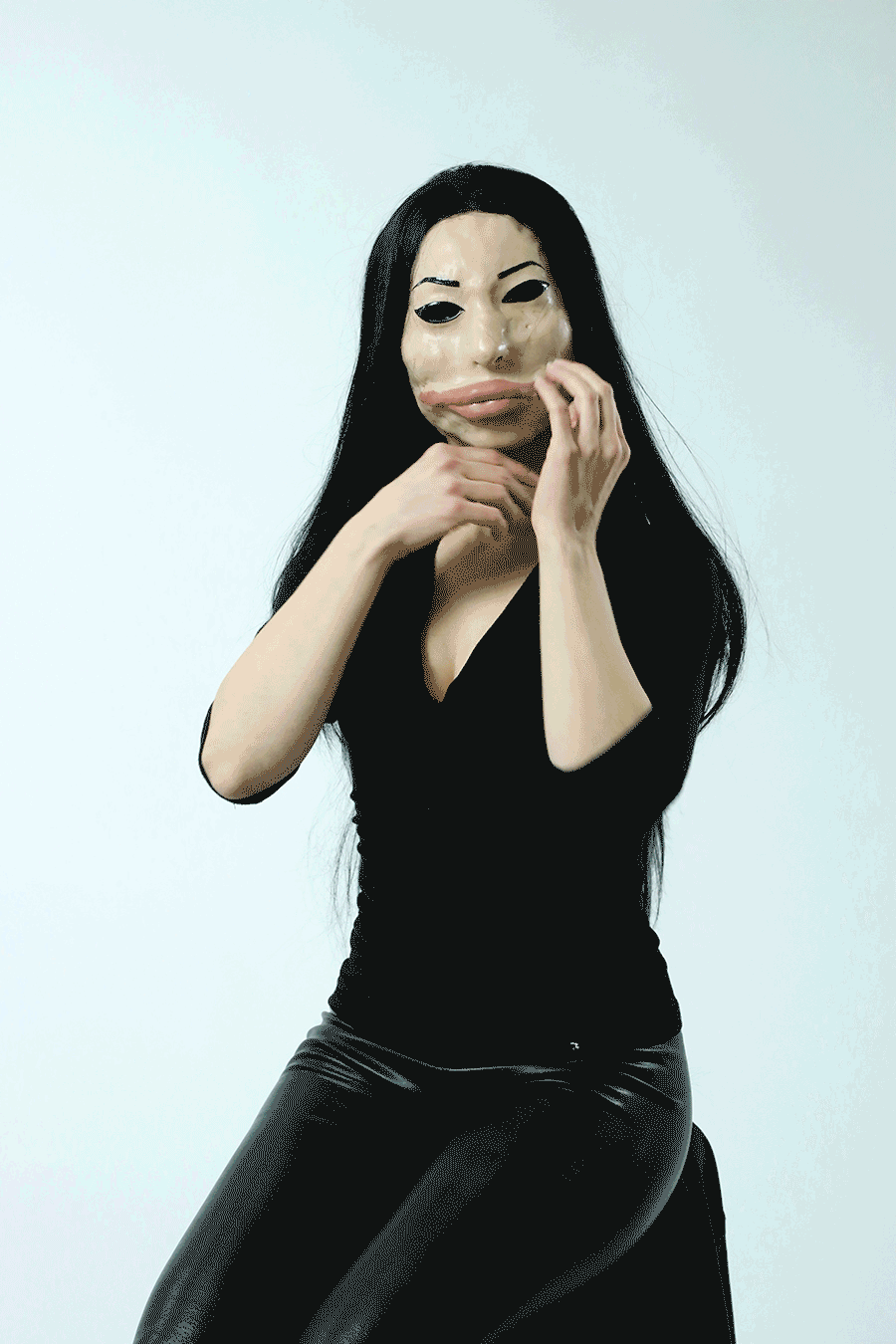
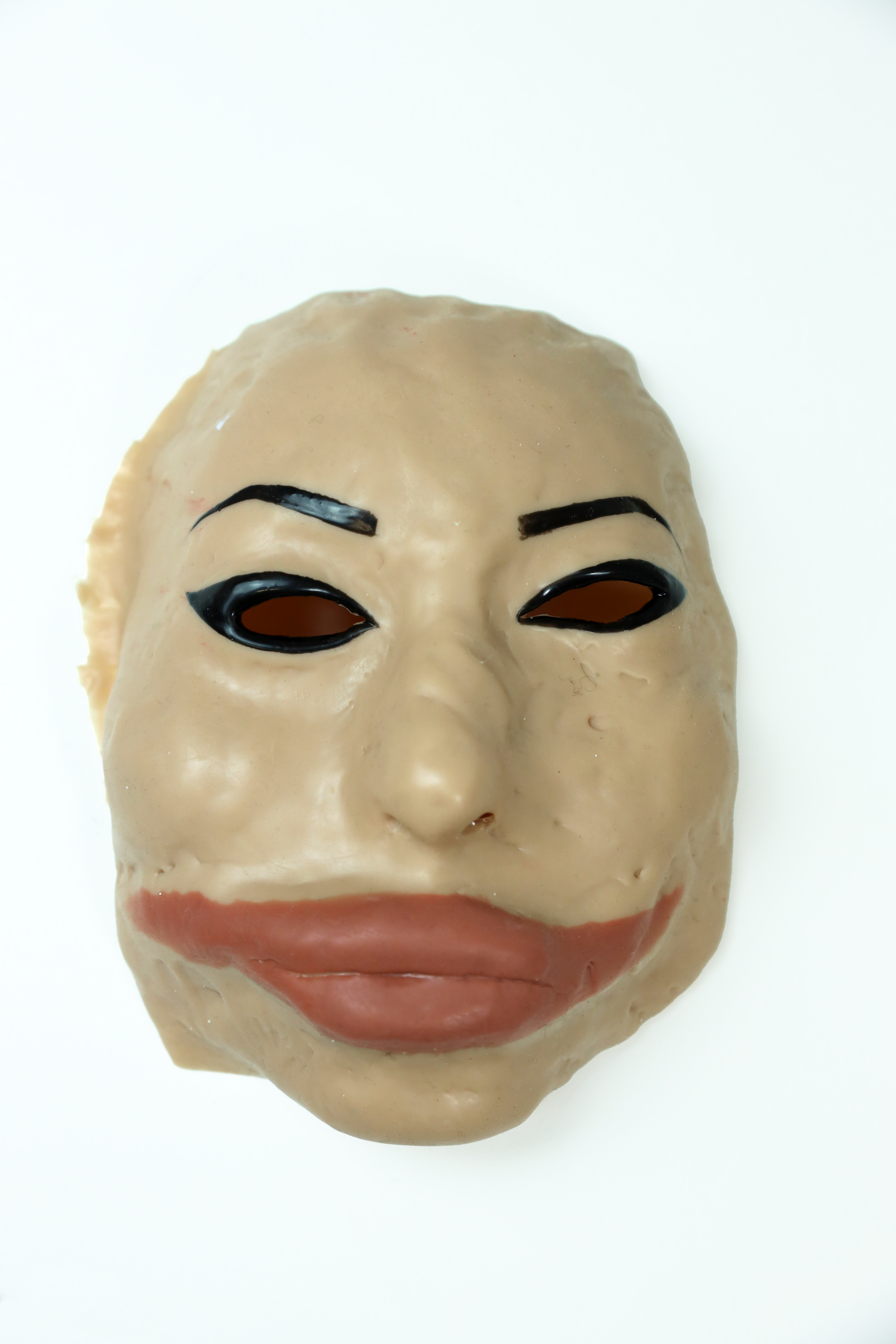
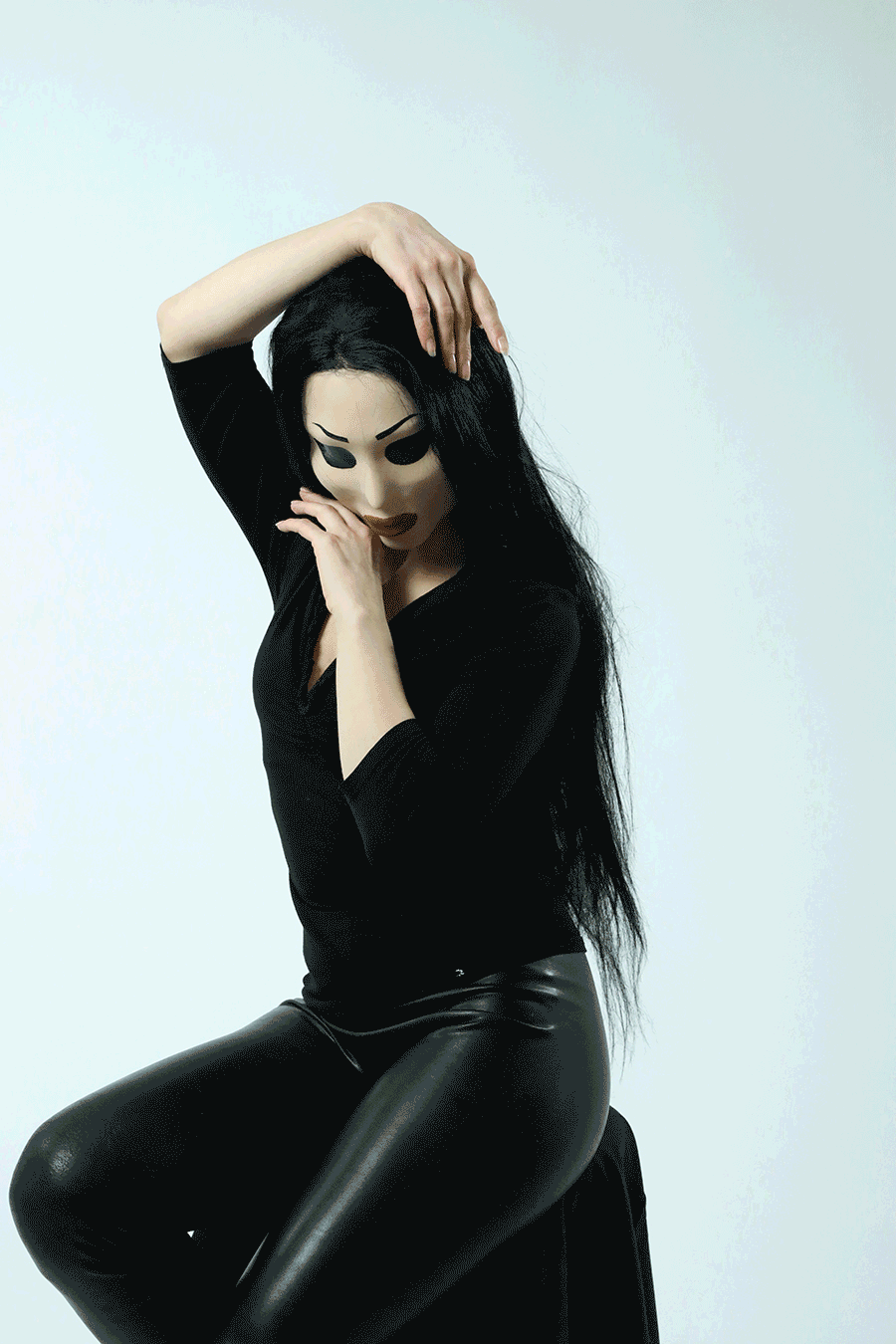
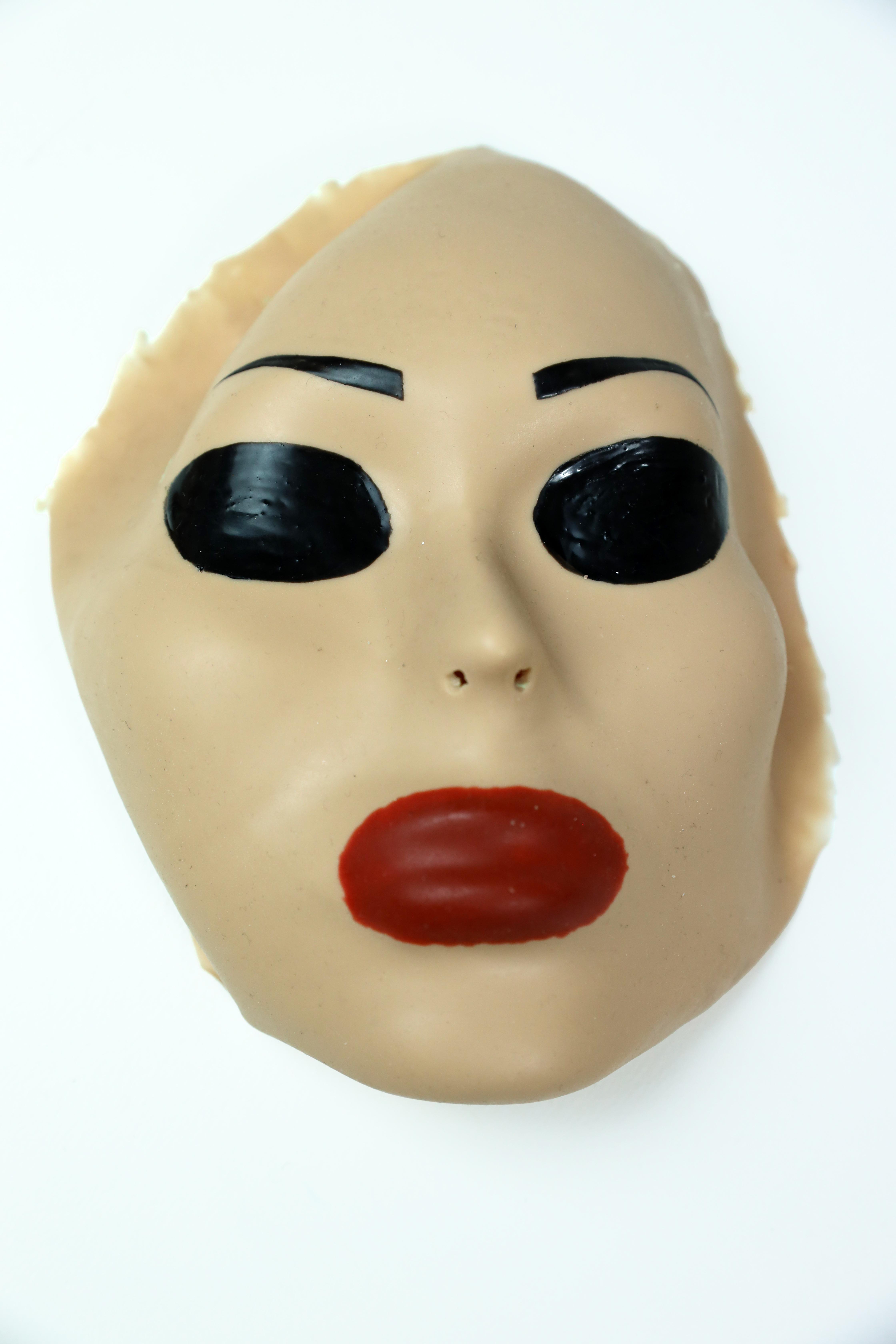
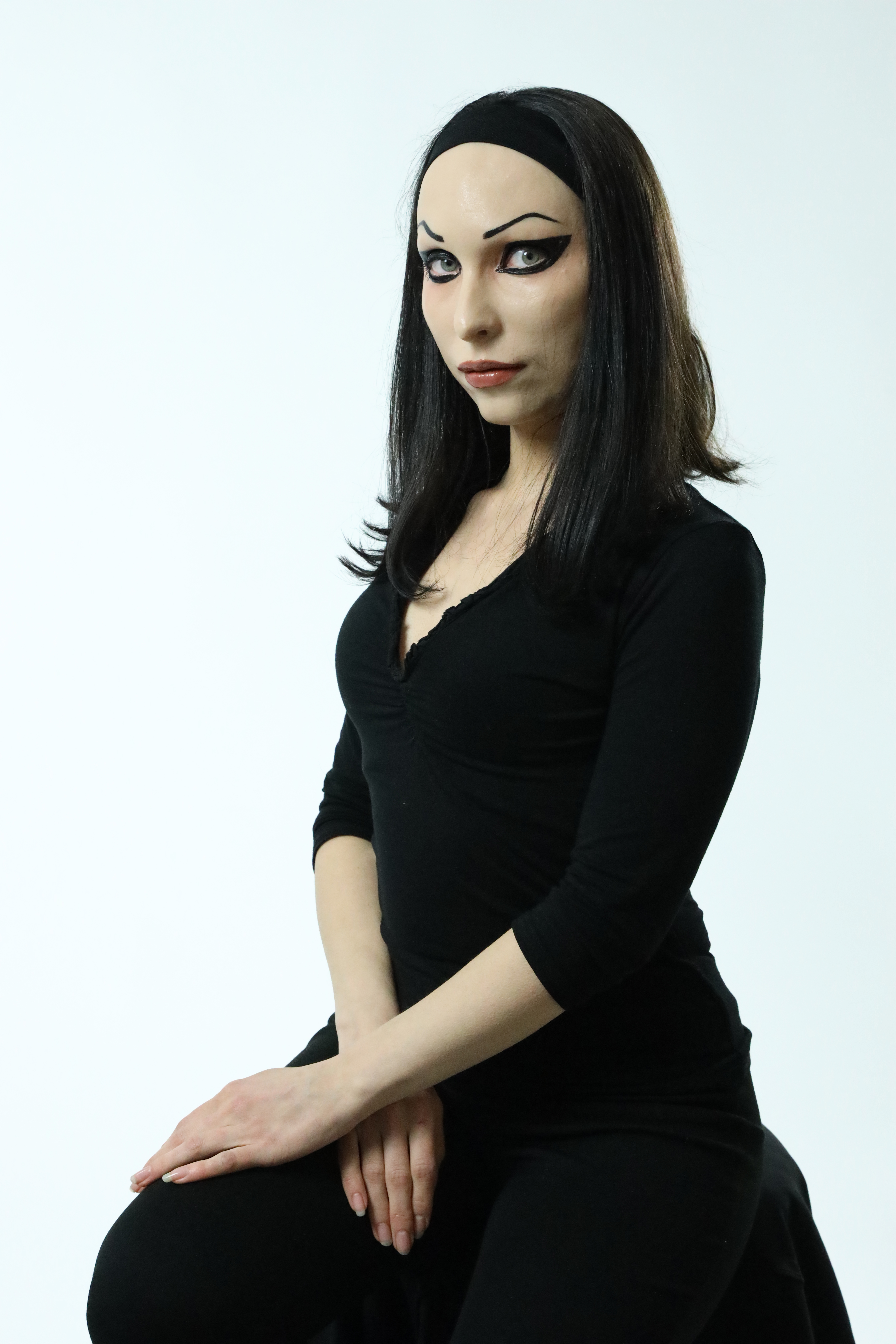
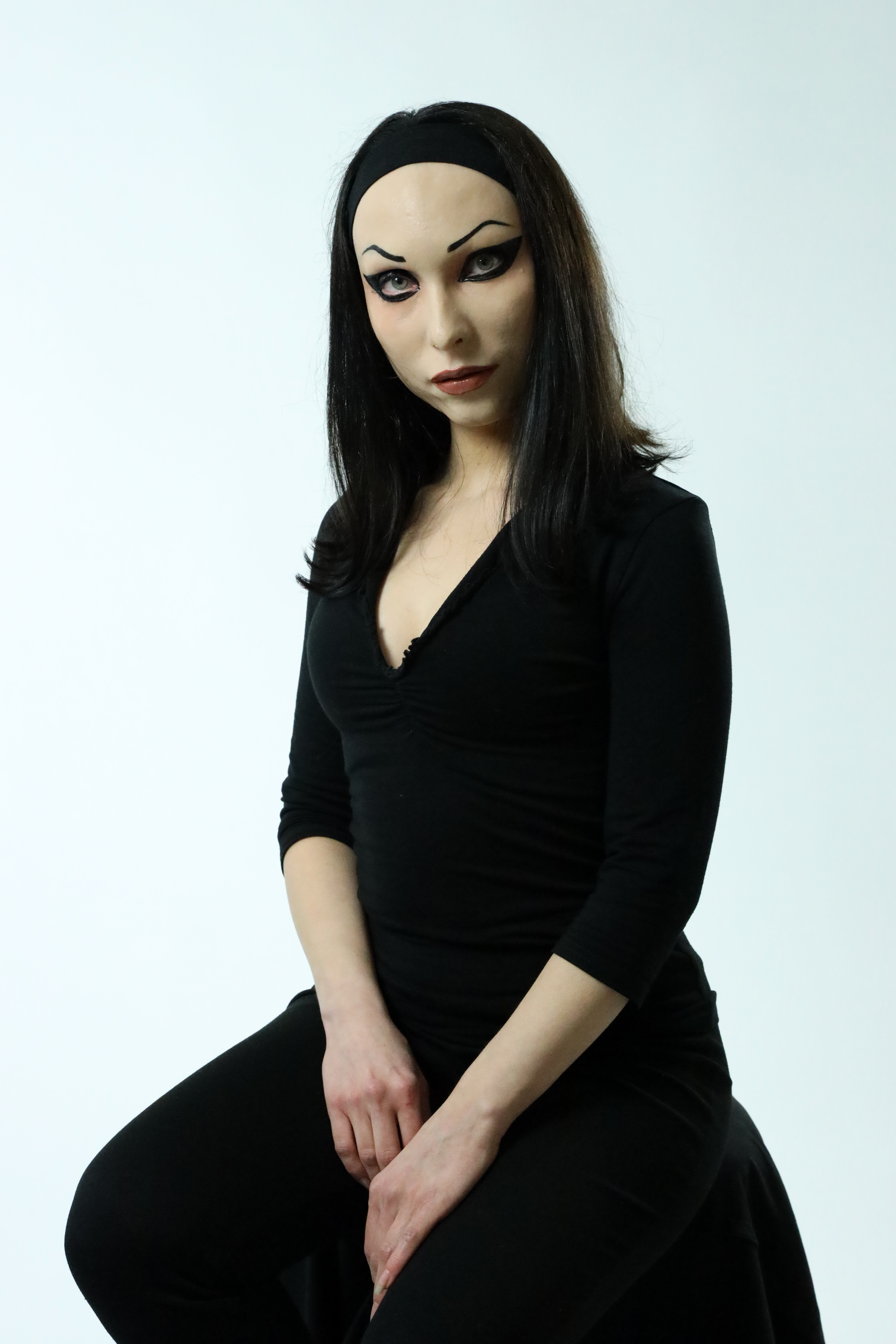
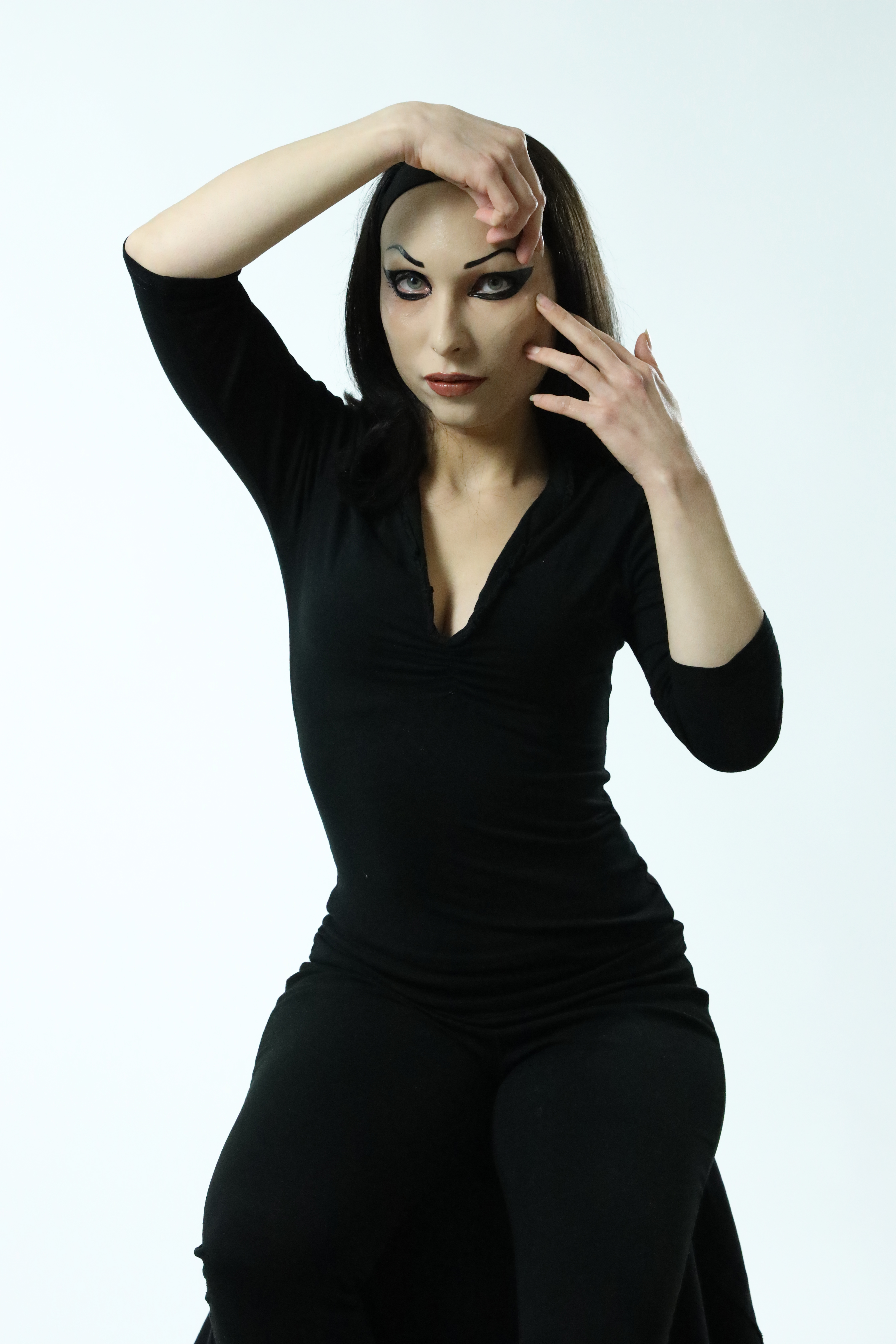
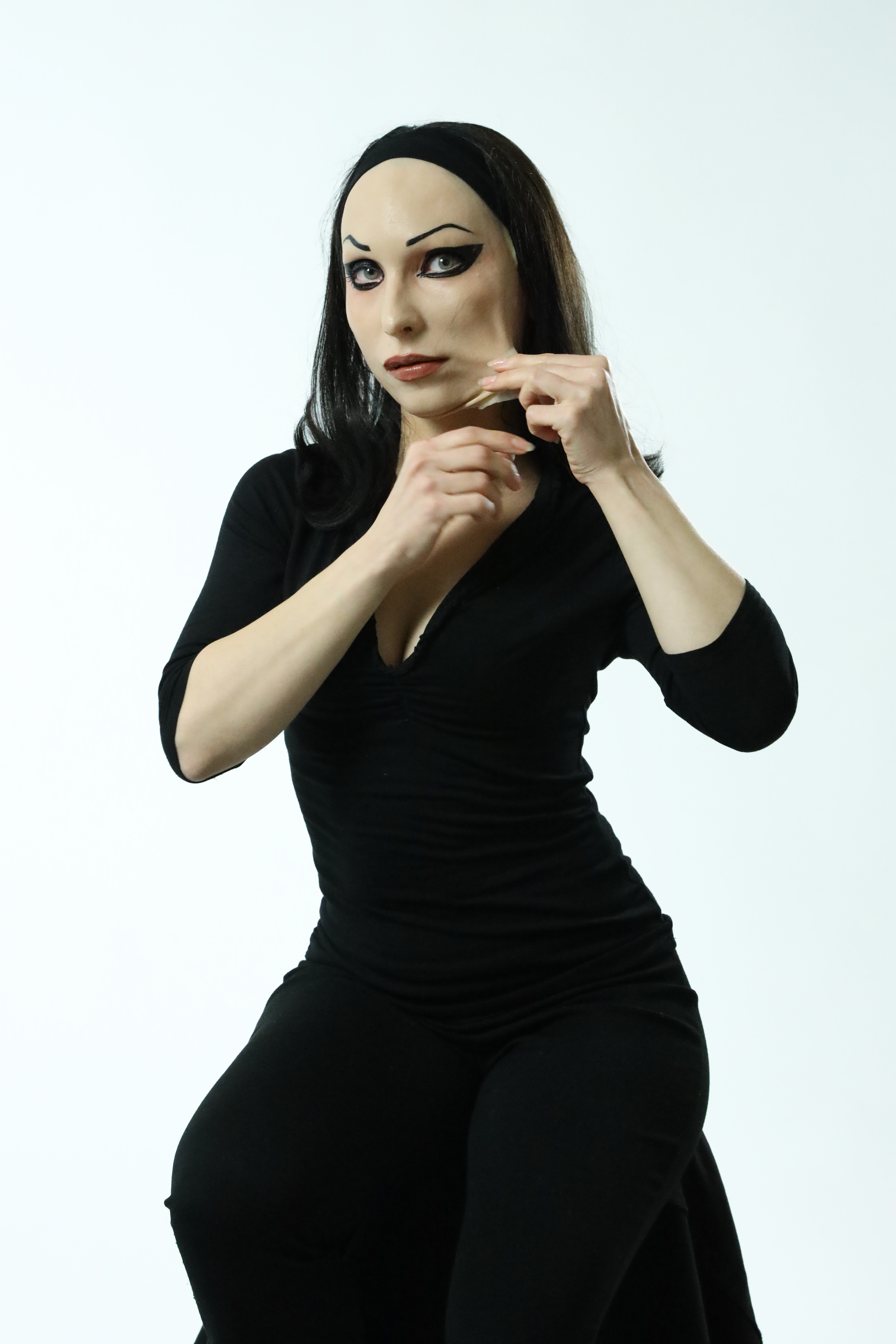
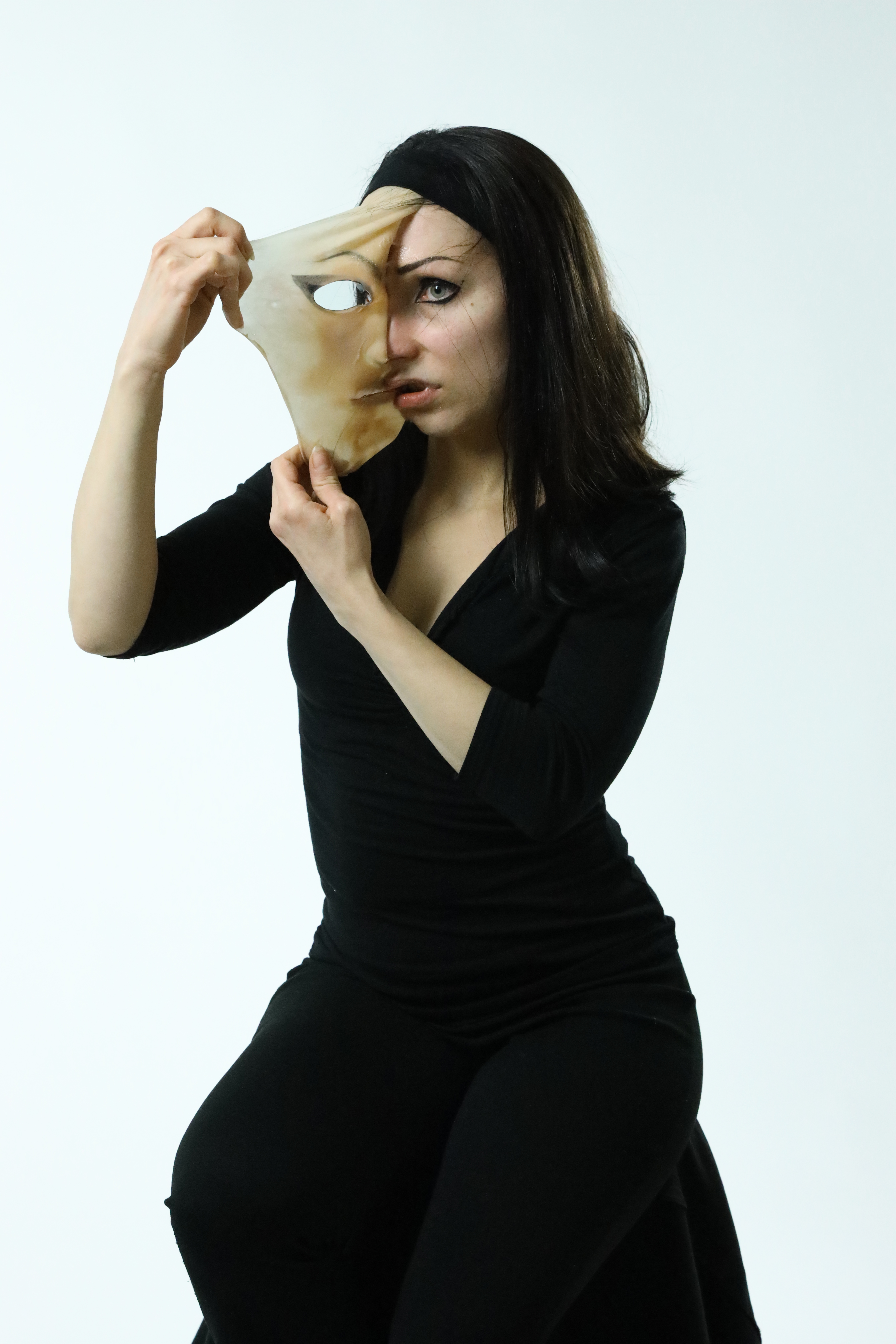

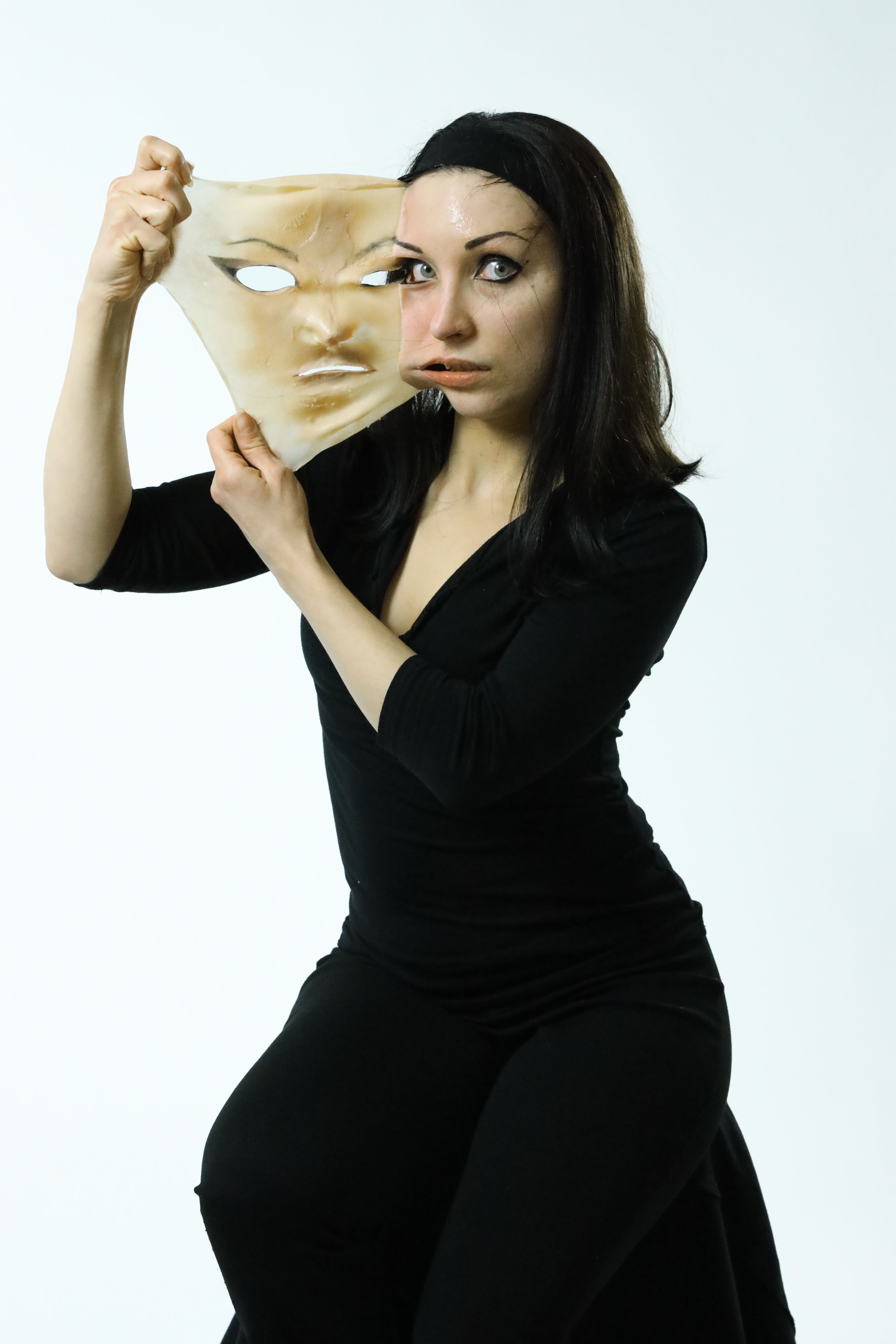
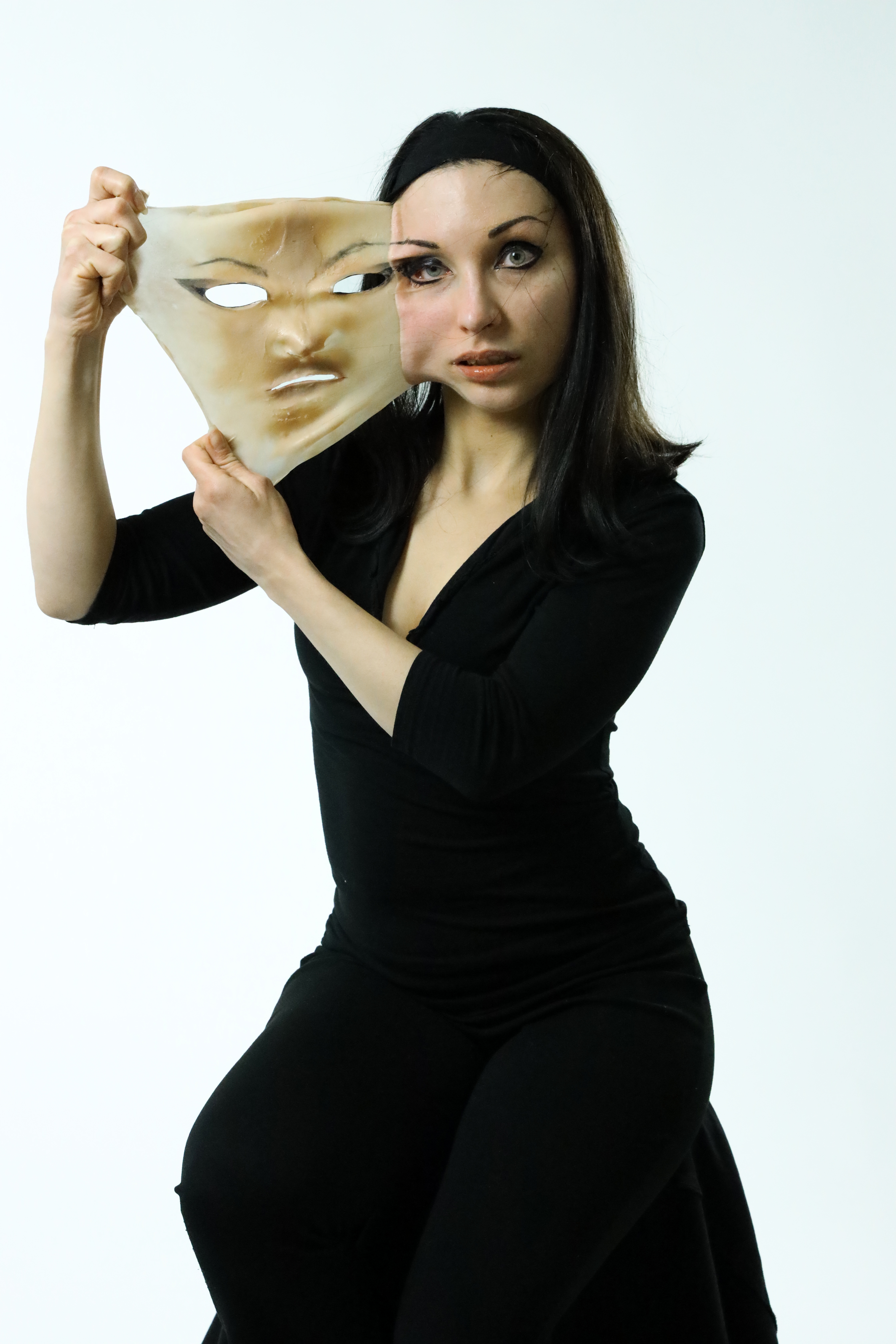
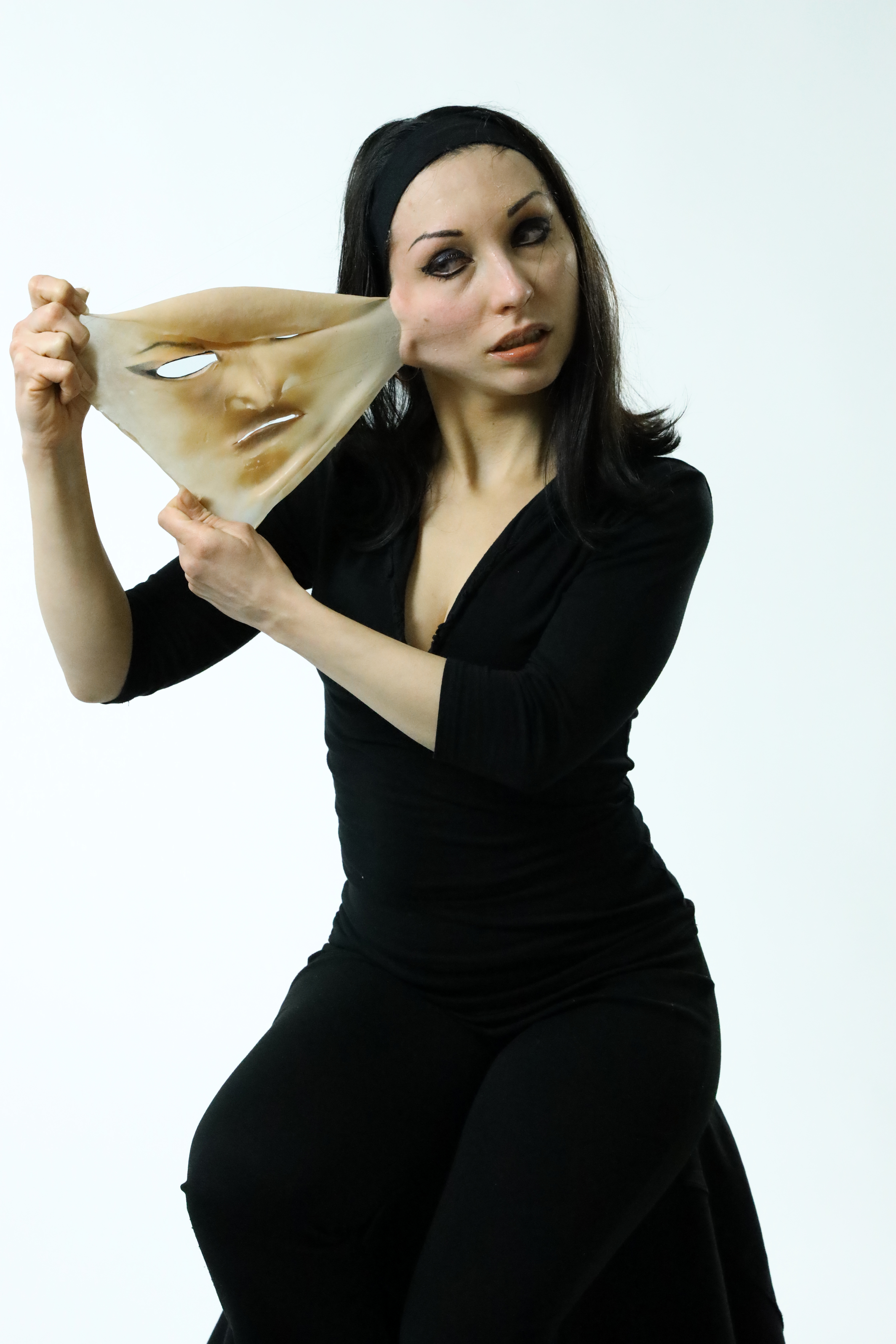
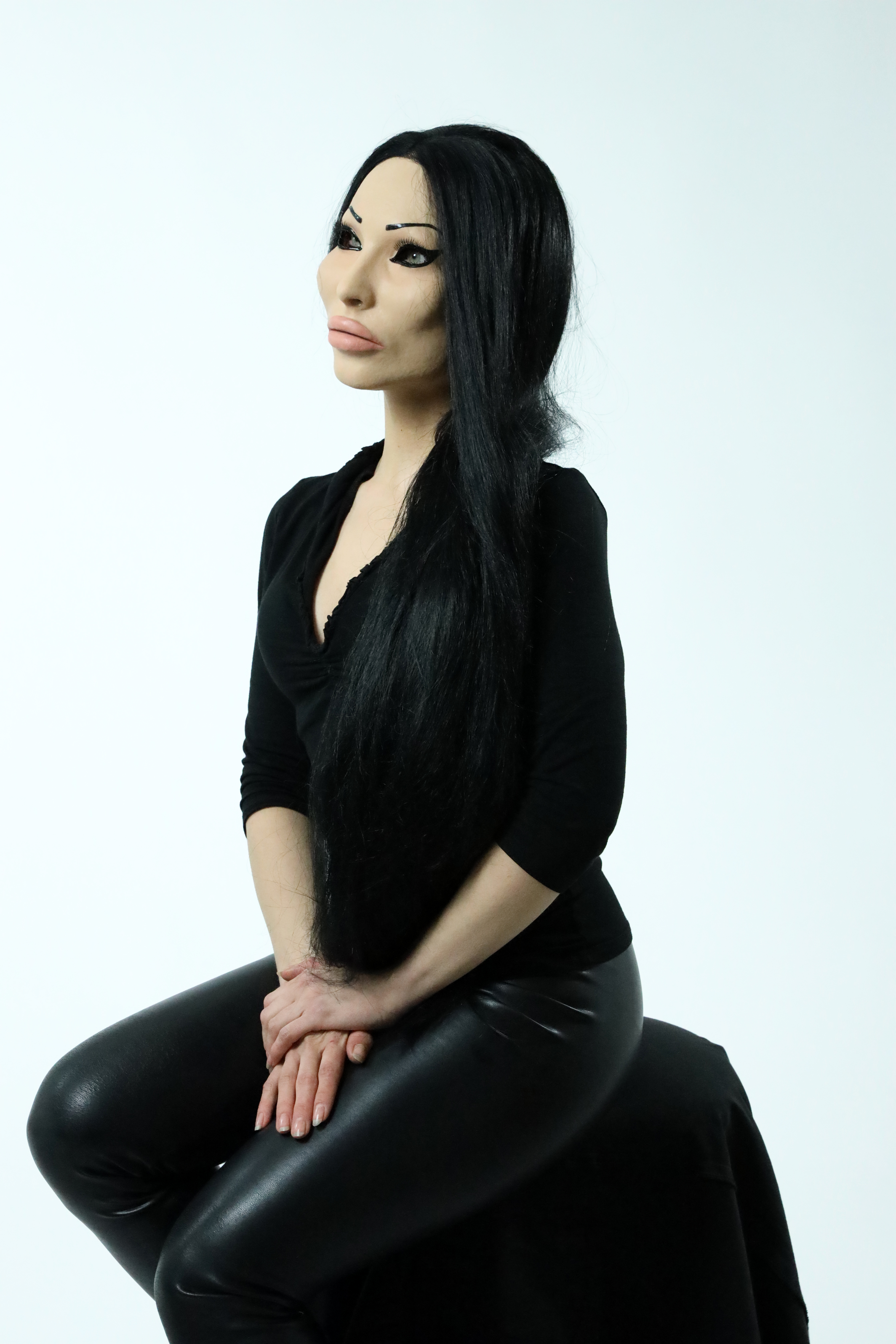
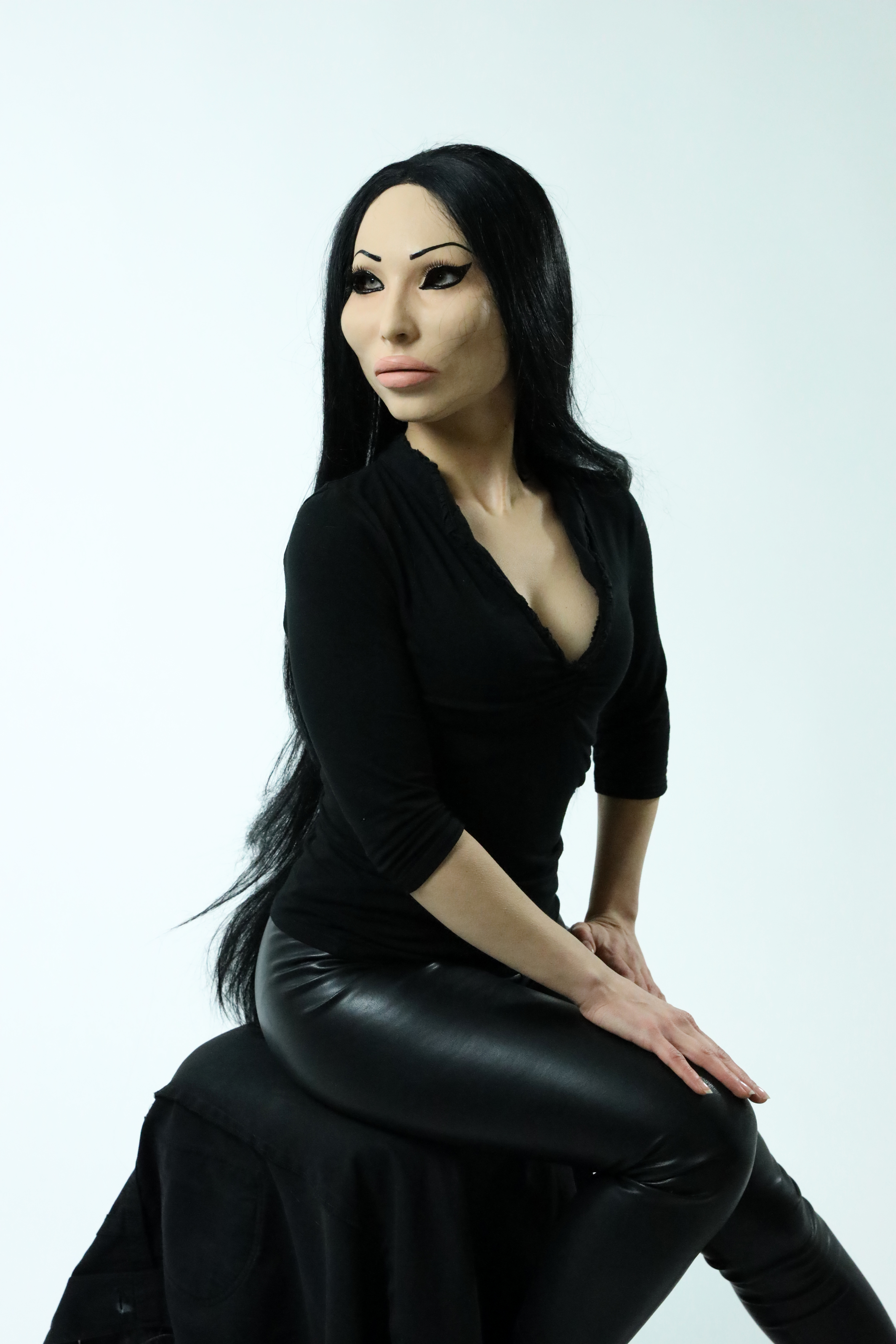
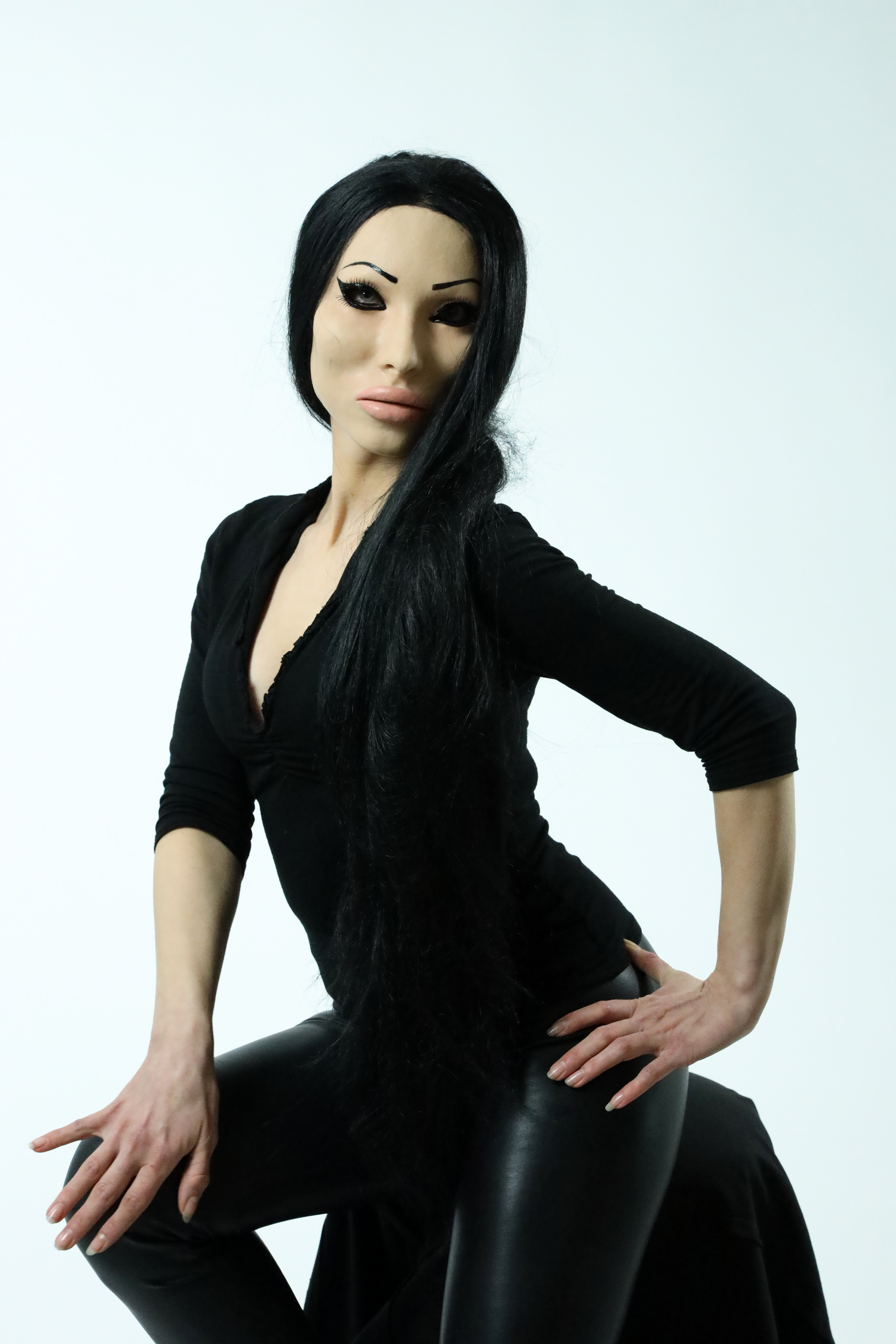

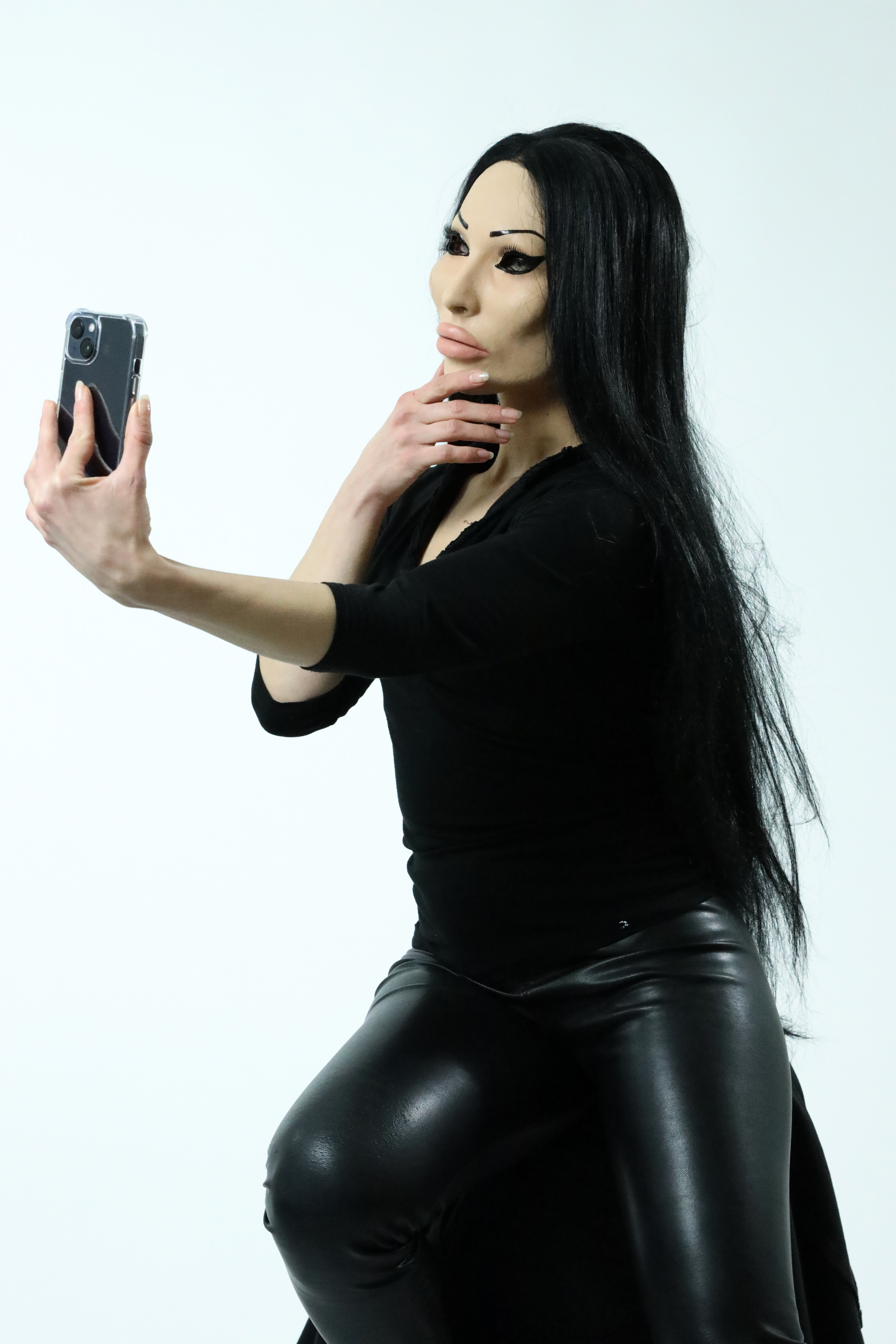
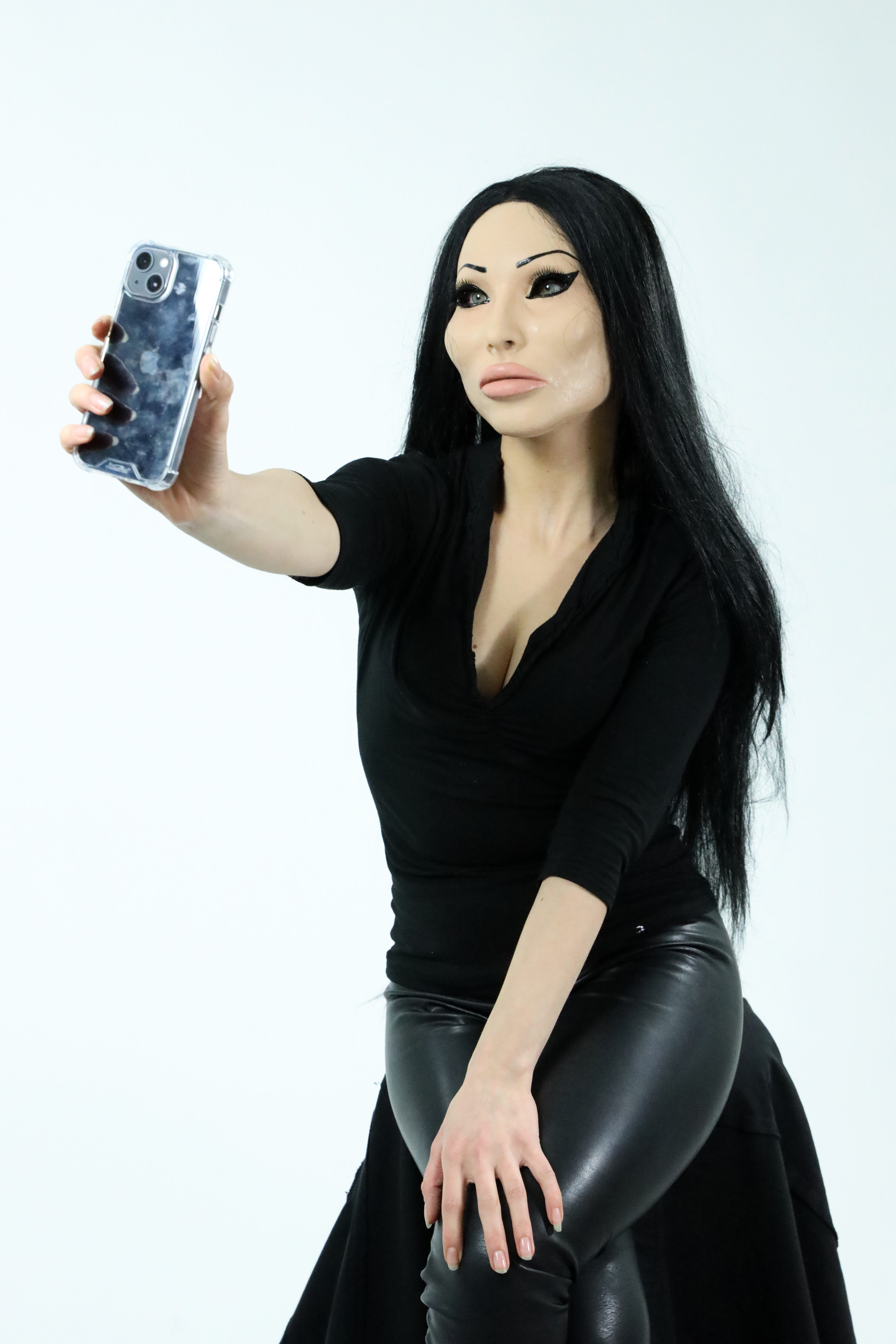
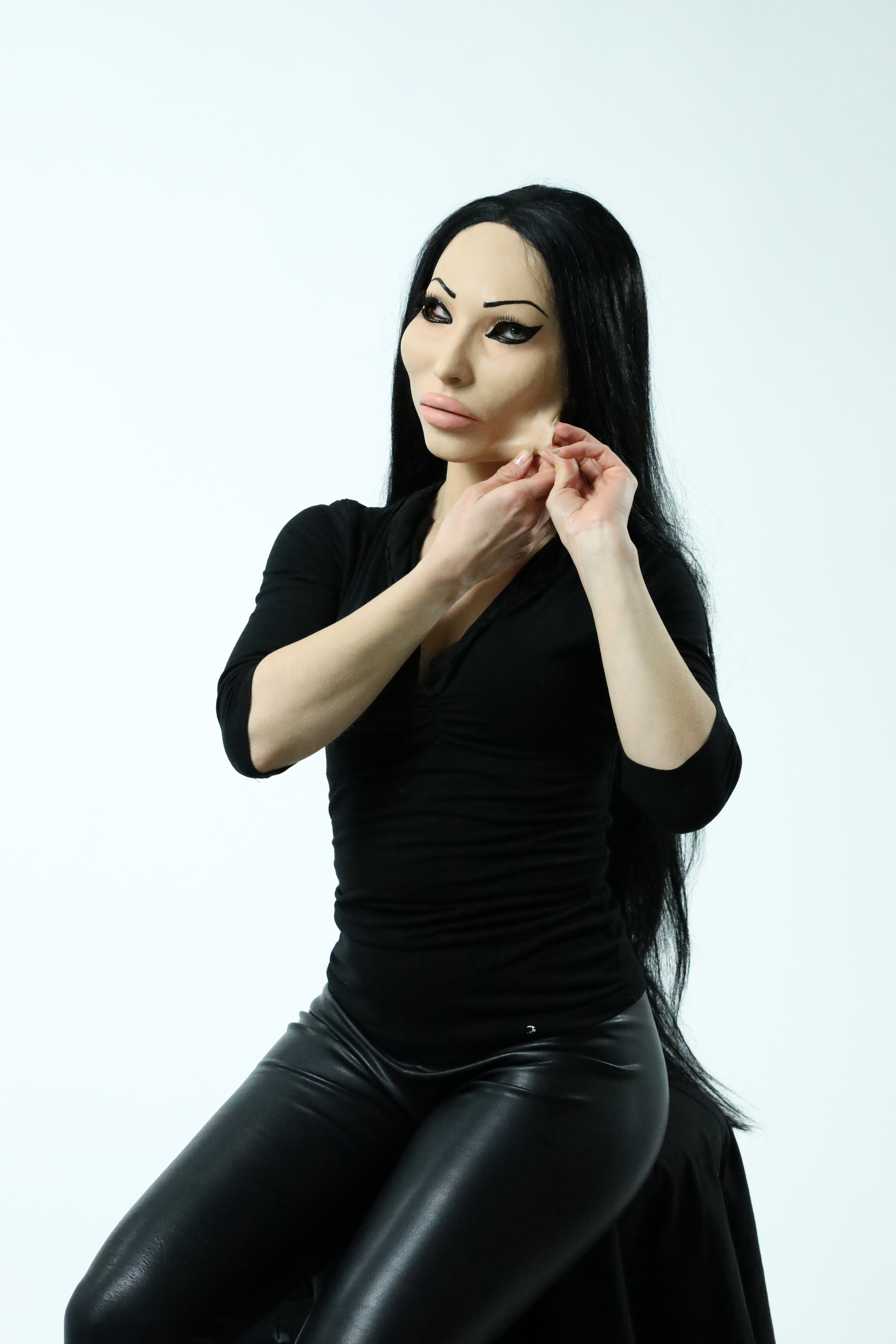
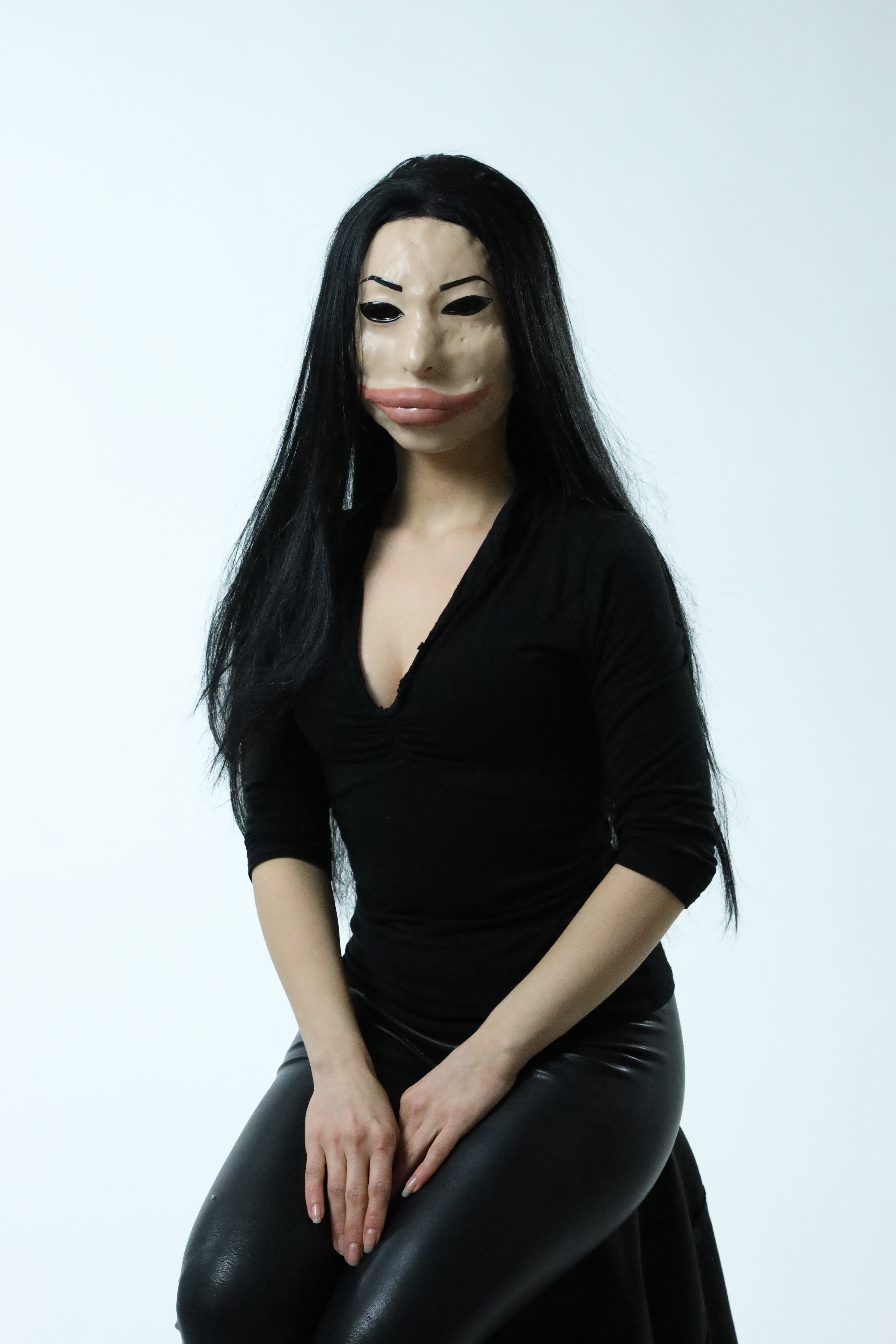
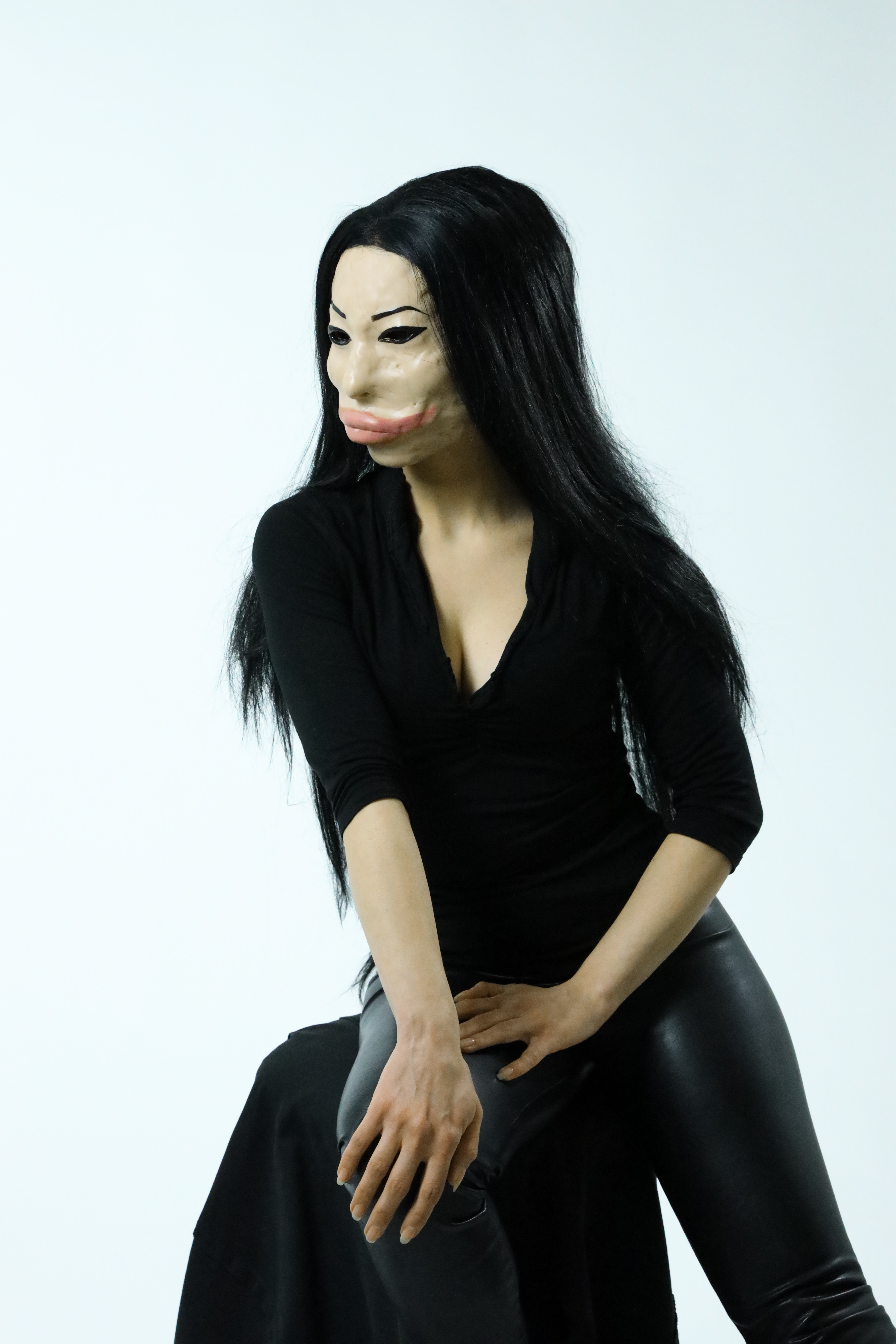
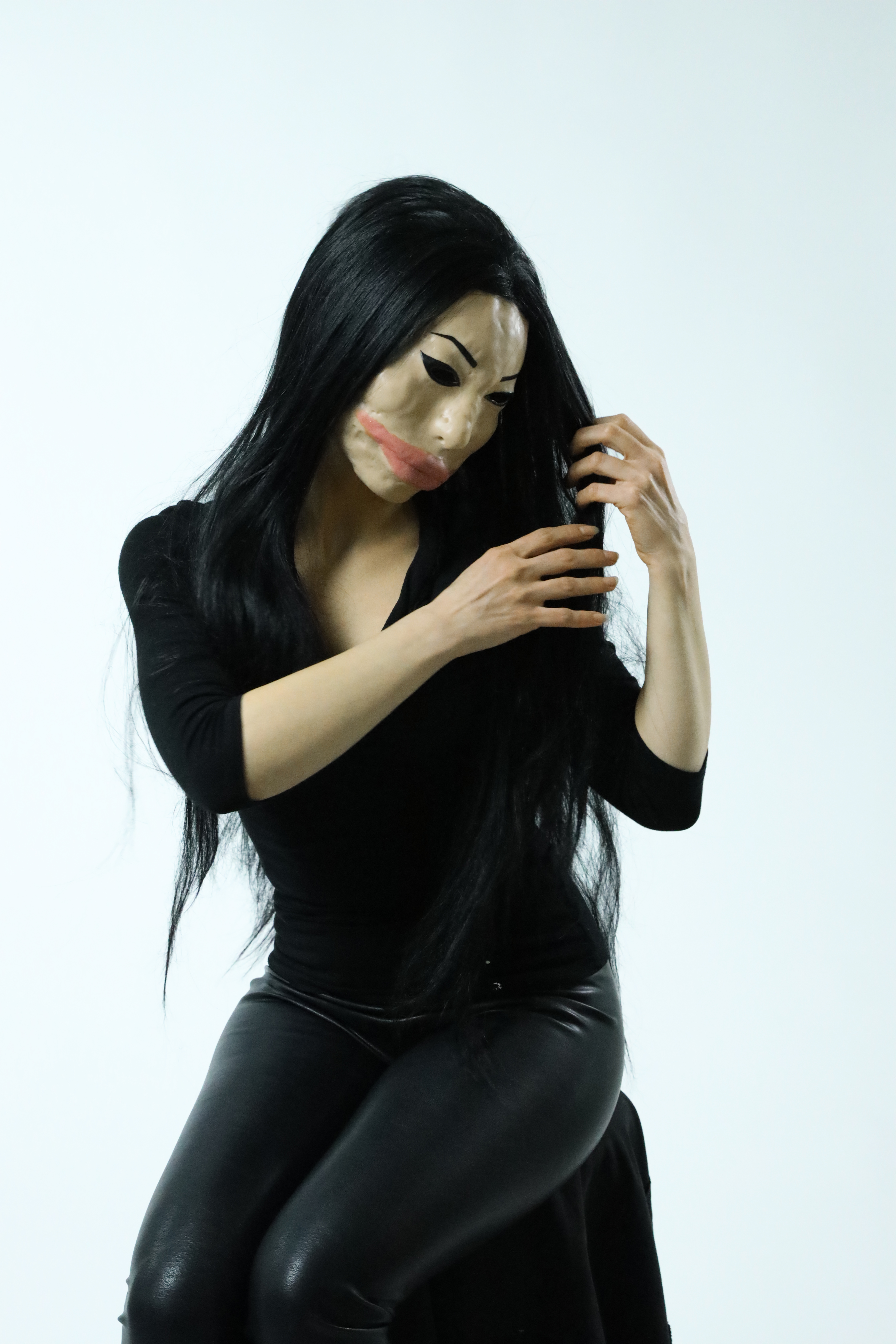
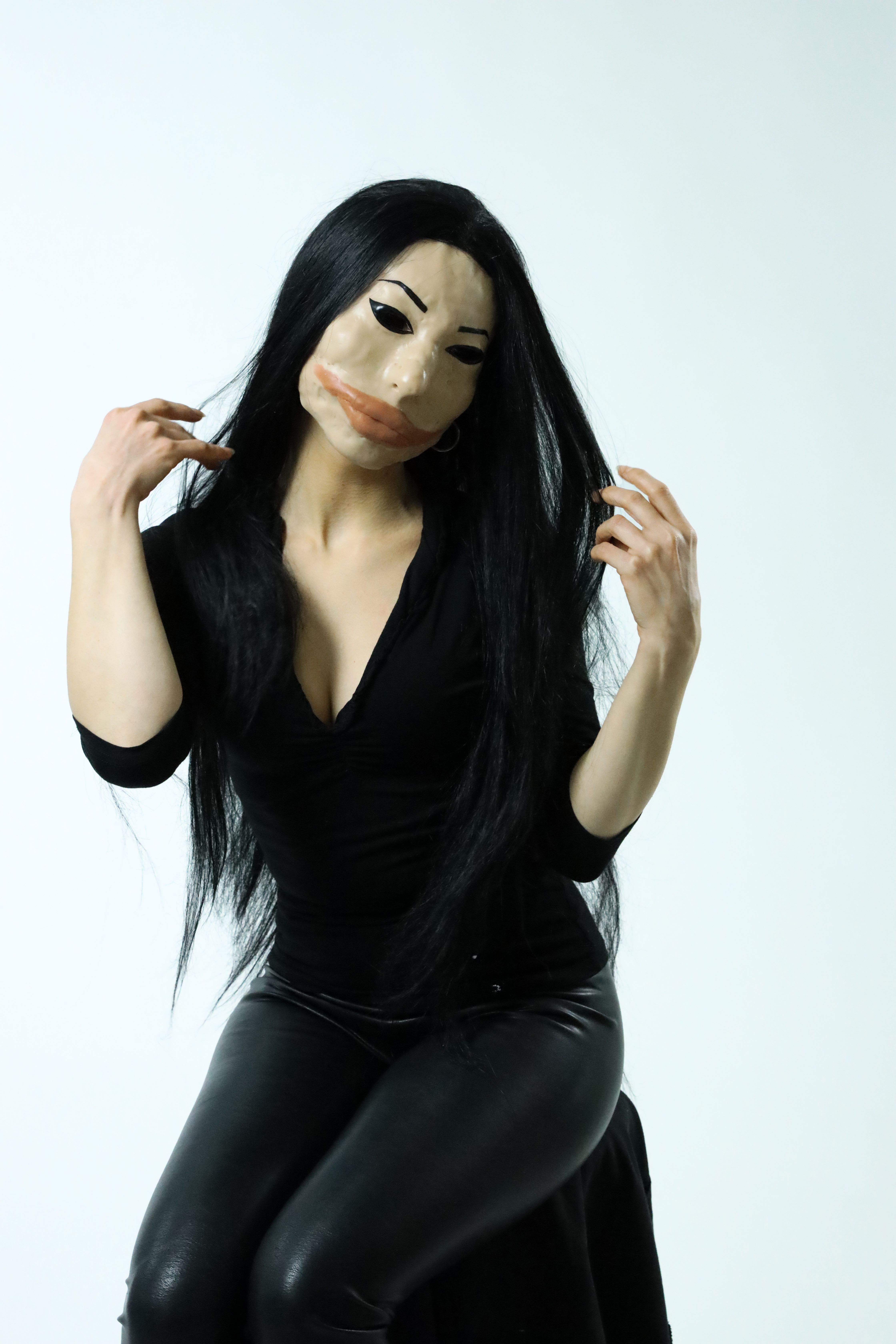
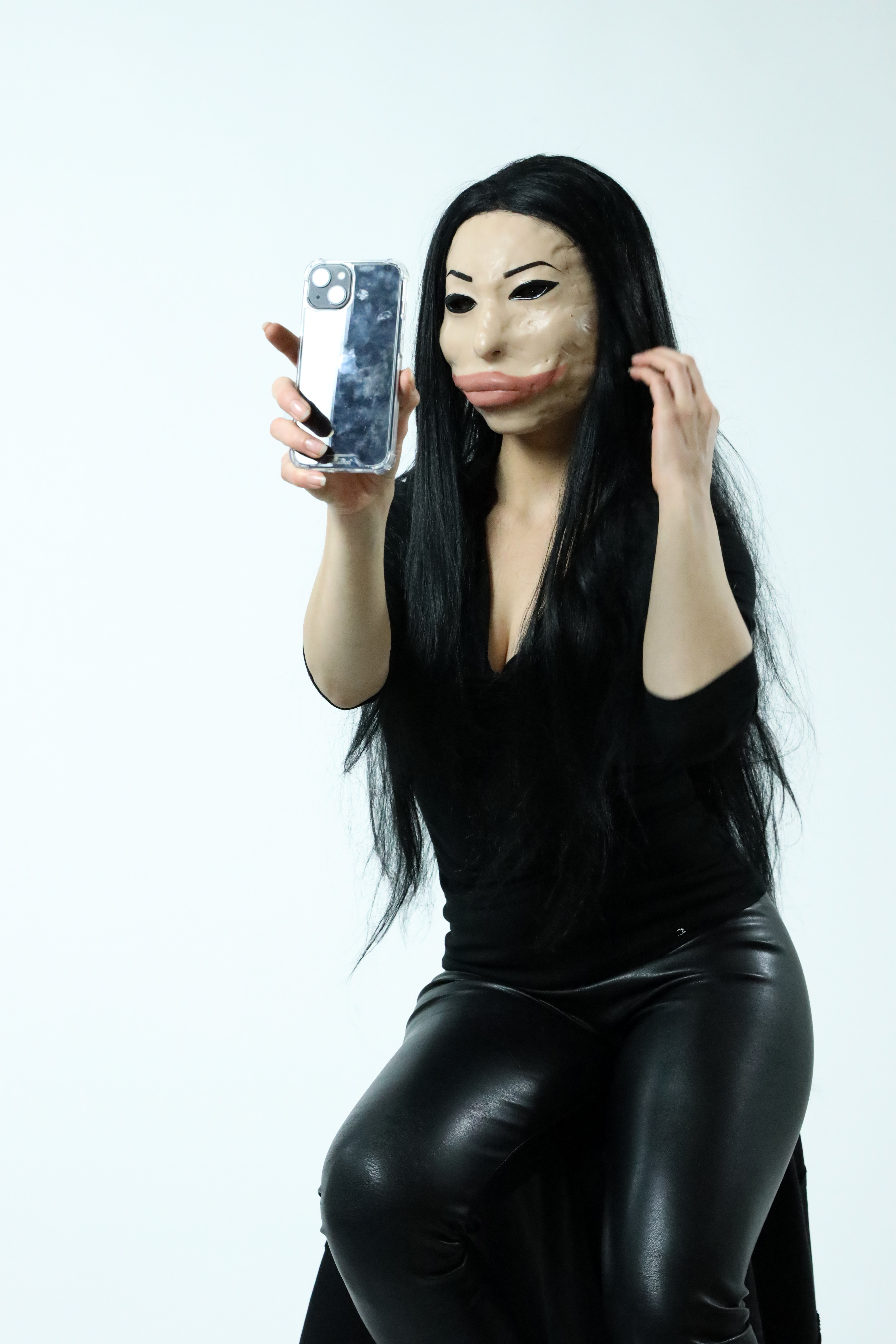
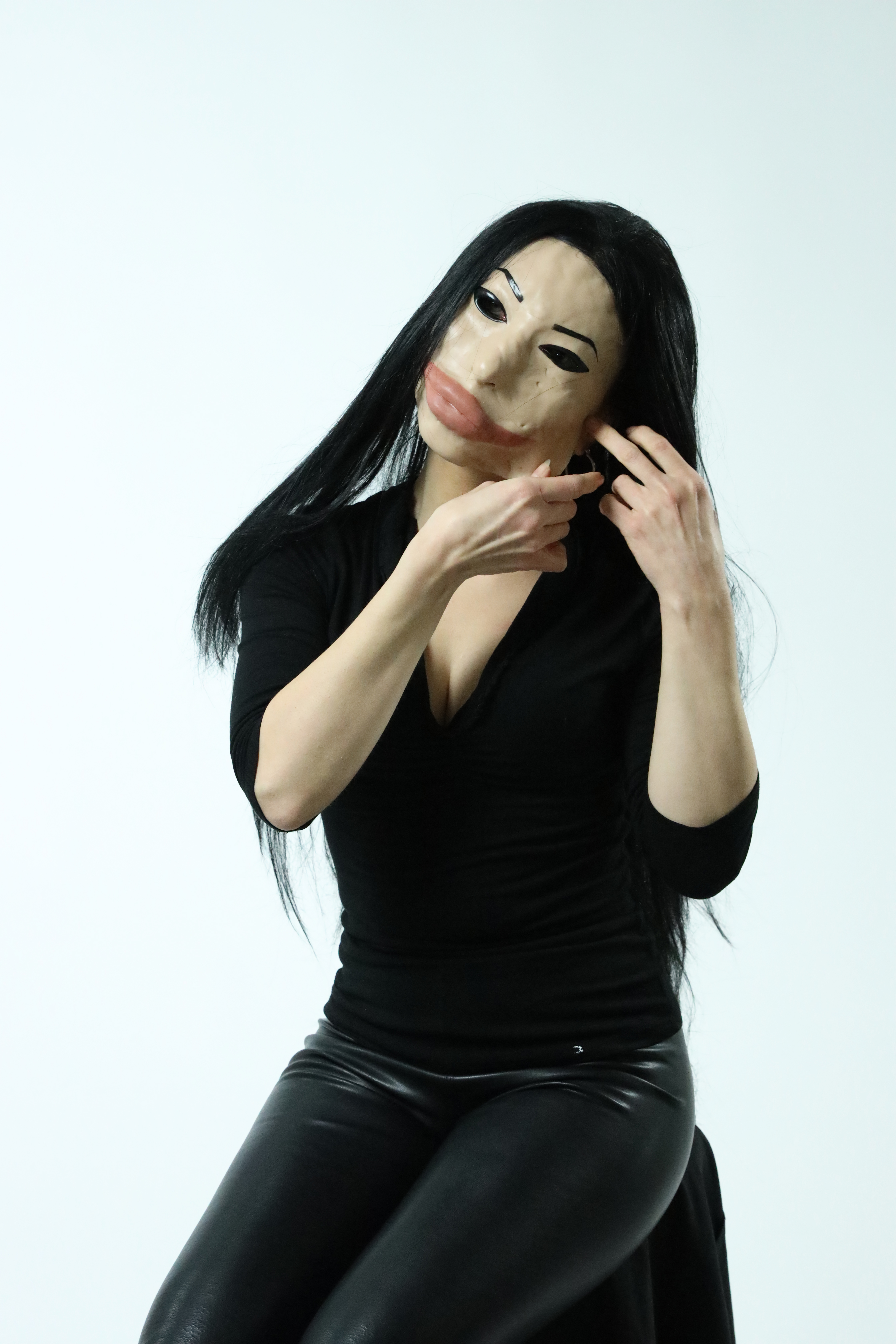
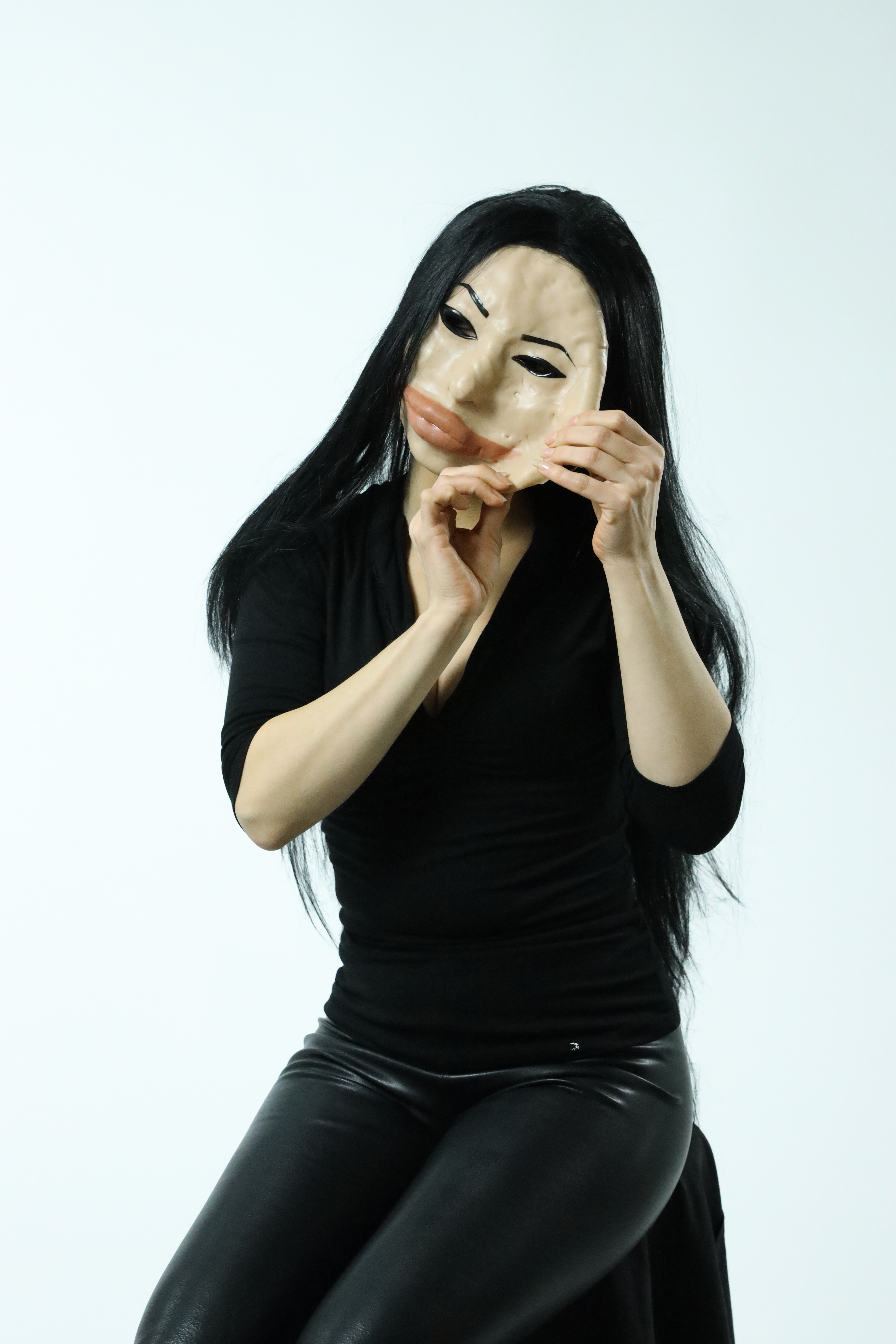
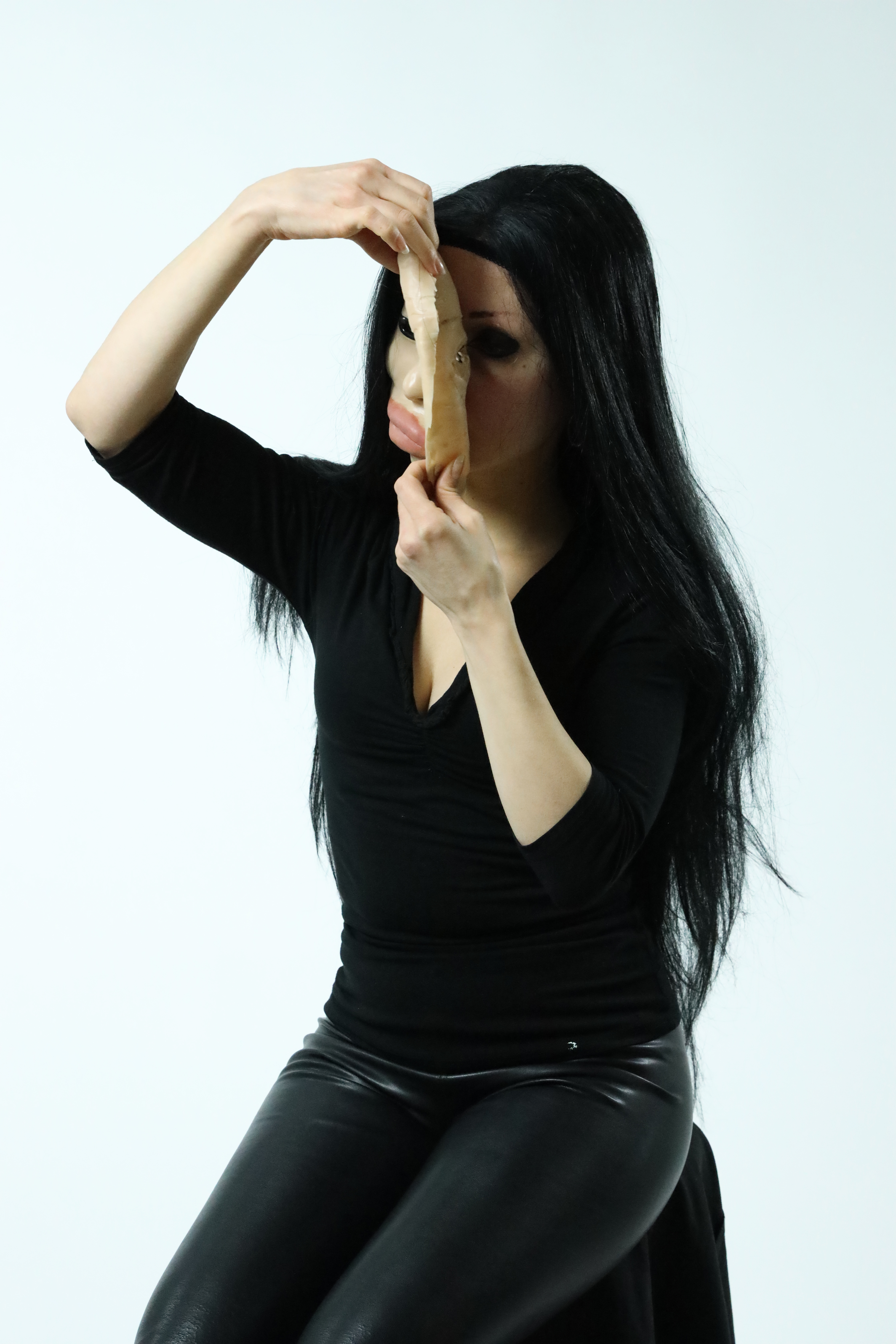
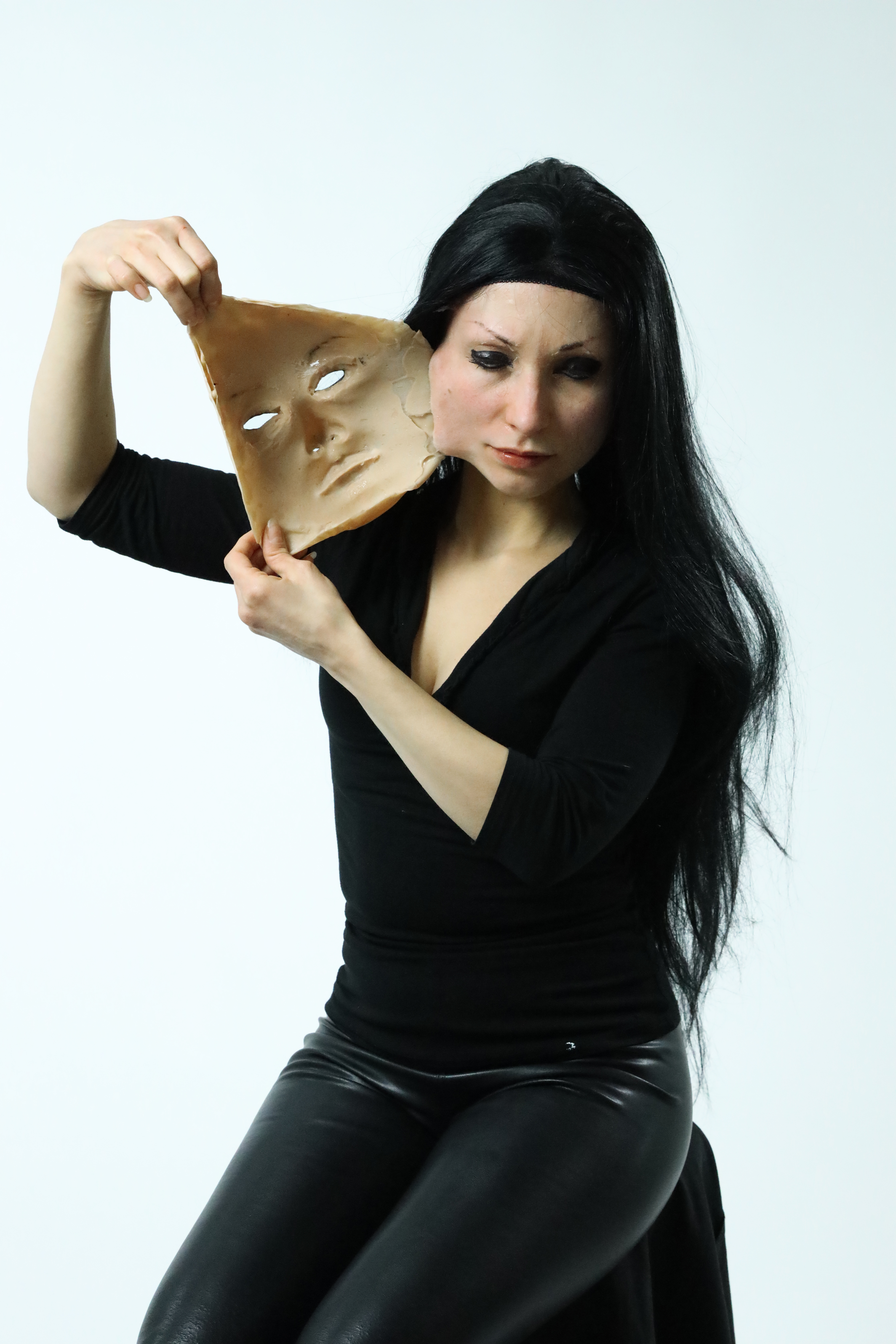
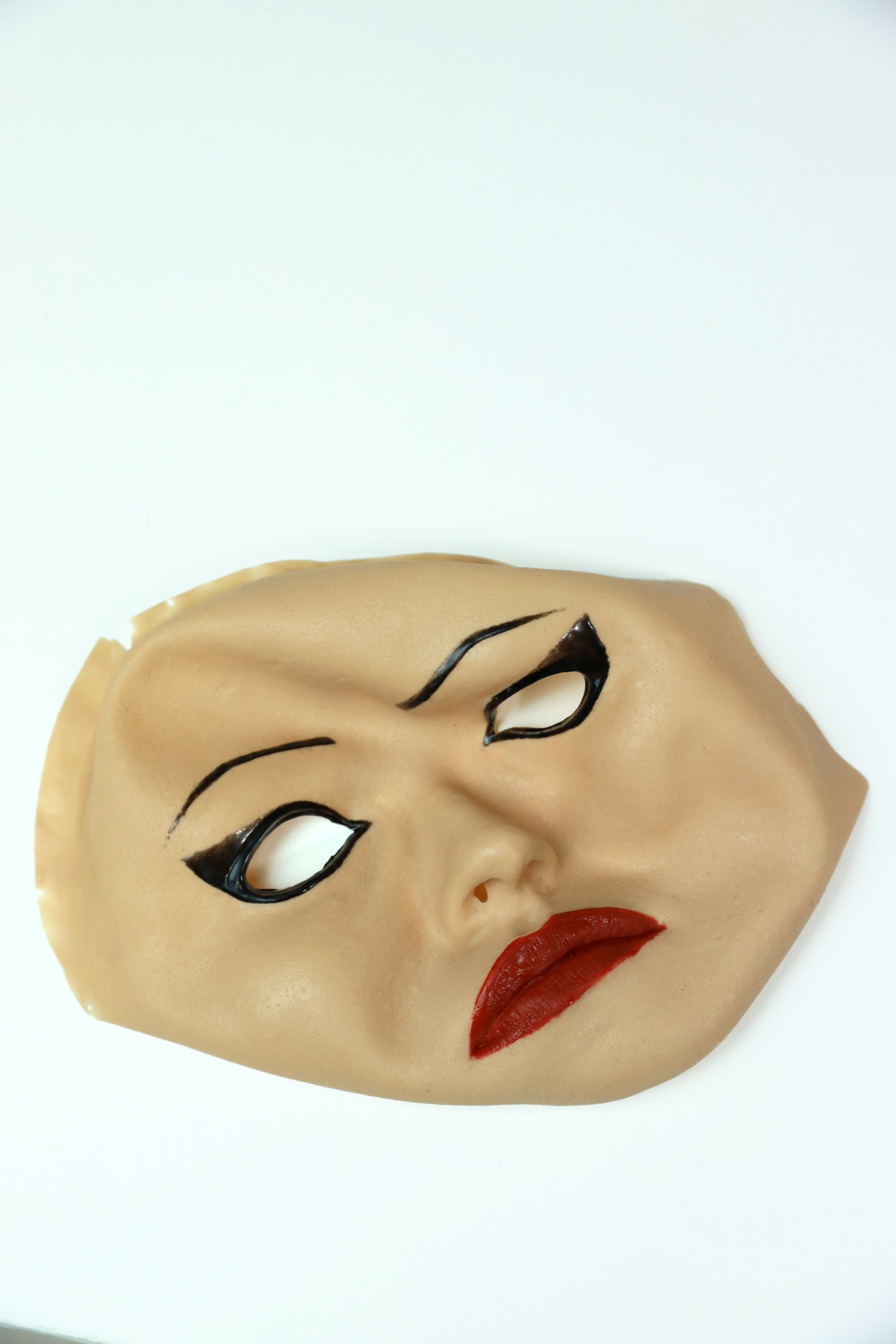
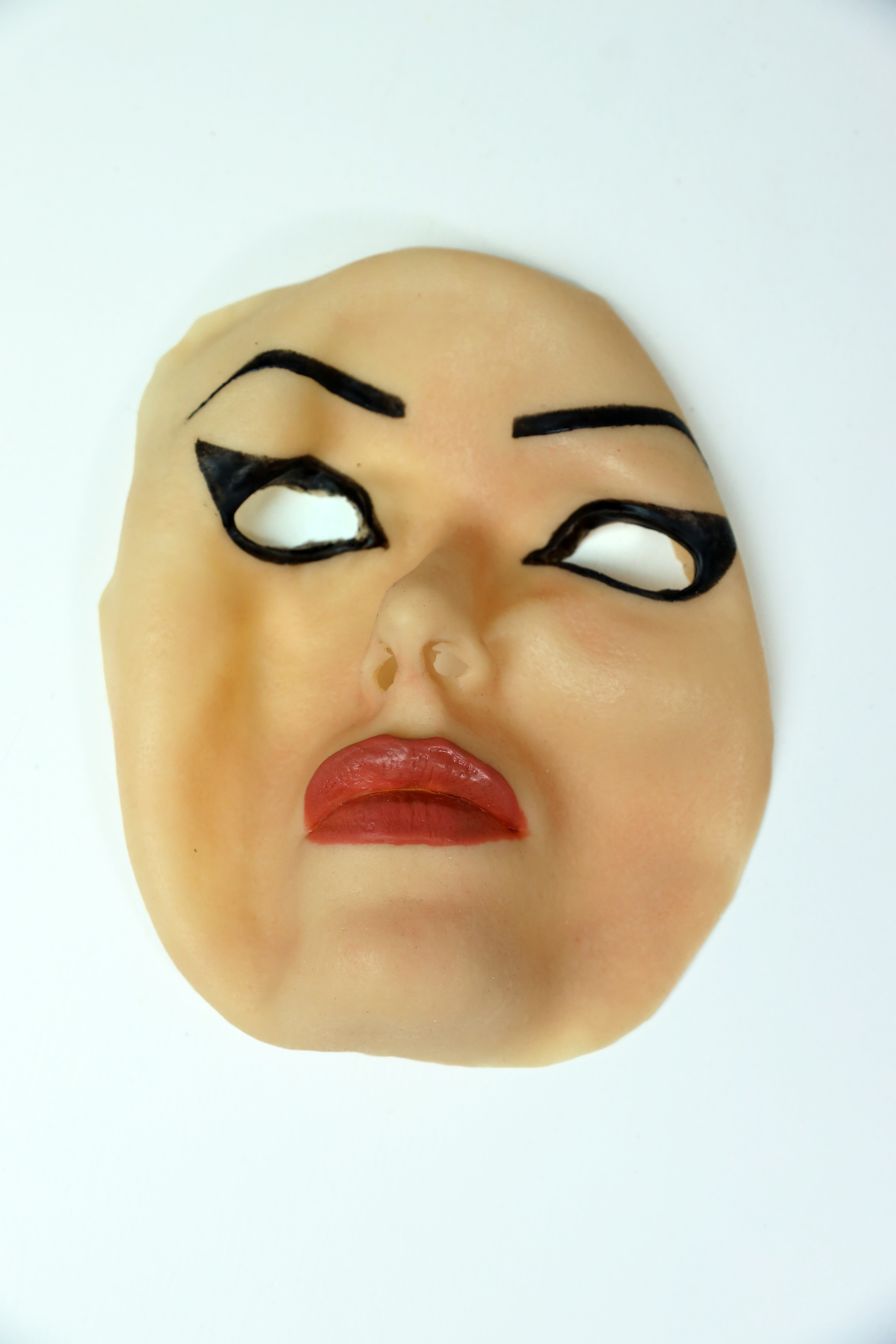
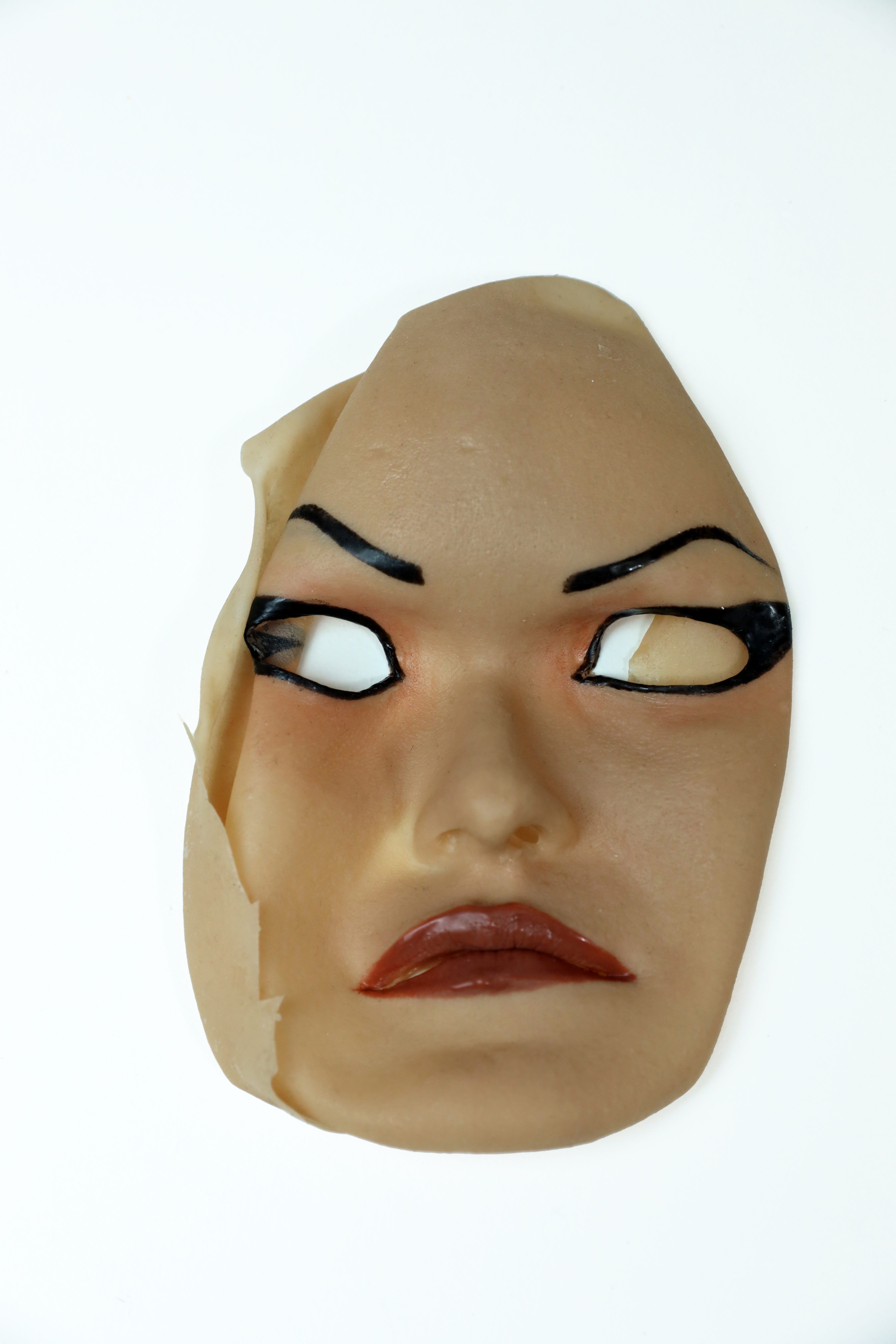
Work on MyFACE began in 2020 when the artist made an early prototype of the face mould at an online event (Uptown Sloterdijk x ISO Amsterdam, streamed June 19, 2020 - Click on the play icon on the bottom right side of the screen to see the launch video of the project and the making of the face mould as a recorded performance). She created the mould during a live-stream performance, whereby she made a negative copy of her face with the help of four trained assistants. Later, she casted a series of silicone face masks to be worn by models or participants as a prosthetic. The faces are exact replicas of her own face, though alterations were added later to express the cosmetic distortions used in different phases of the project.
In these self-portraits, the artist performed what appeared to be she, ripping off her own face, only to reveal some version of herself underneath what turns out to be a mask. This portrait raises questions of authenticity and simulacra, identity and reproducibility, troubling the link between the body and the self in an age of hyperreal images, hypercosmetics and state surveillance. One is also left with the haunting question of whether the mask is a metaphor for the “civilised” behaviour we perform every day in order to function in society.
Throughout her process, the artist experimented with various techniques for making silicone masks of her face, modifying the moulds to make variations (in dimensions and proportions) and started exploring the limits of AI facial recognition software (on an iPhone). How far could she go with aesthetic/cosmetic distortions and still be recognized as Laura A Dima? The artist looked at popular procedures among Instagram influencers such as lip fillers, cheekbones implants, facelifts, and nose reshaping. She implemented those into the second face sculpture. The result is an amalgamated “Instagram Face”, an increasingly popular appearance generated by the use (and overuse) of cosmetic surgery and filters. Due to the rising popularity of this aesthetic, some cosmetic clinics now offer a package of procedures to get that exact look.
AI learns to recognize faces, and the artist is researching what happens with this system if you alter the structure of one's face. What classificatory disruptions occur by getting plastic surgery, or if the face is subject to an accident? In terms of augmentations to the structure of the face, where is the identifiability threshold? Can an artist create a glitch within the informational substrate, manipulating the surveillance software into recalibrating its own classifications?
Related shows:
-
07.03.2024: De Nachtapotheek until 09.03.2024- Salon Veneman
- Group Show
-
09.02.2024: Graukunst: Fetish until 11.02.2024- Grey Space in the Middle
- Group show
-
05.05.2023: L’AGE D’OR until 07.05.2023- The Crypt Gallery
- Group Exhibition
-
21.03.2023: EDRi until 22.03.2023- Bozar
- 20 years anniversary event
-
15.06.2022: myFACE- Sexyland World
- performance




























































